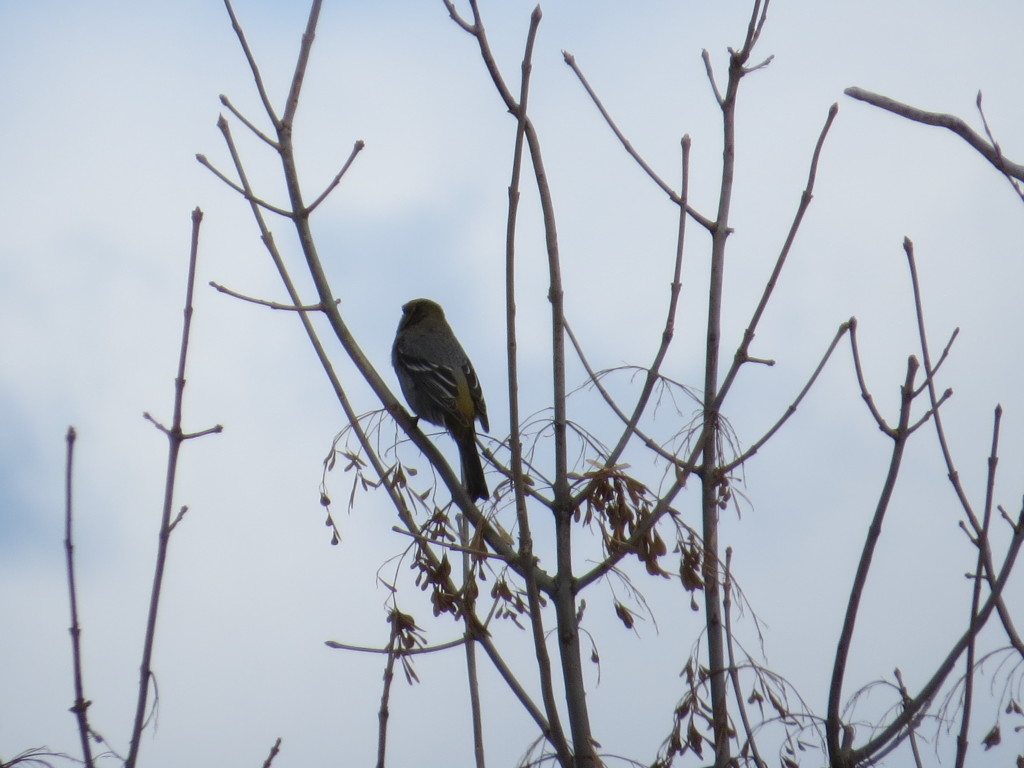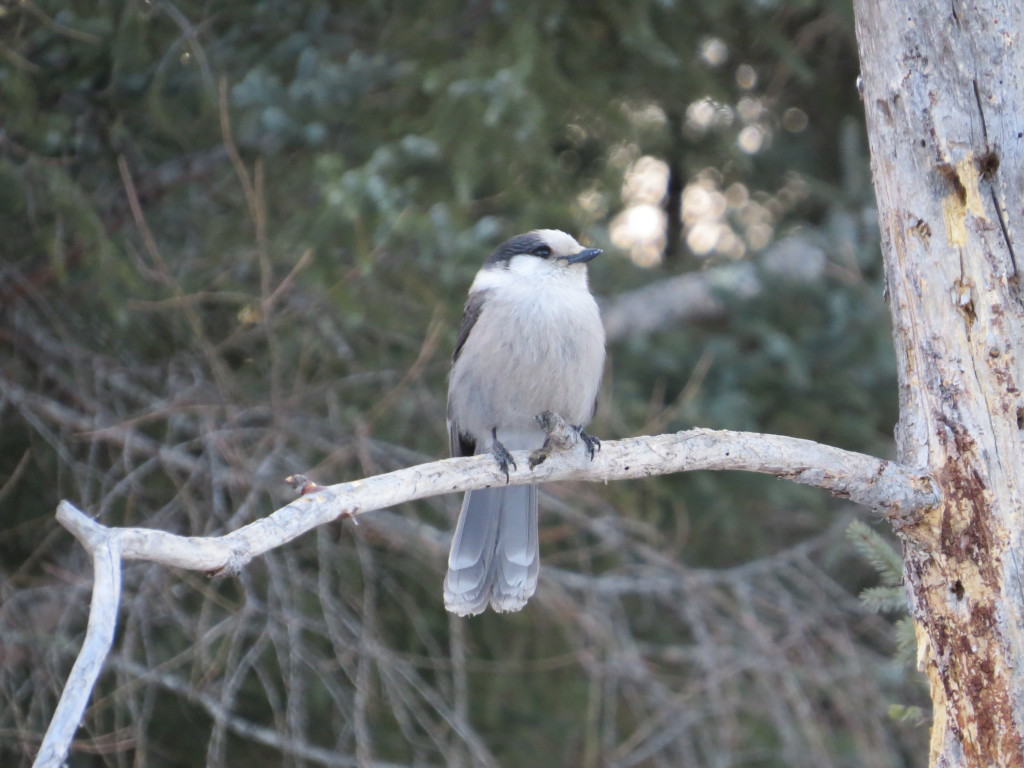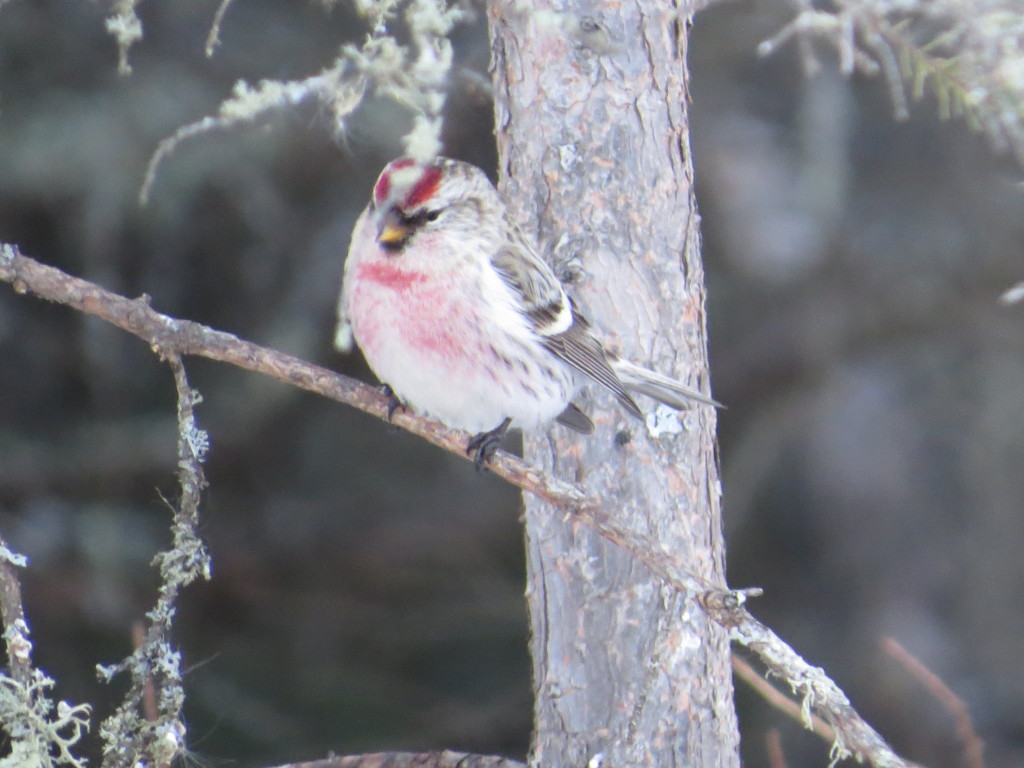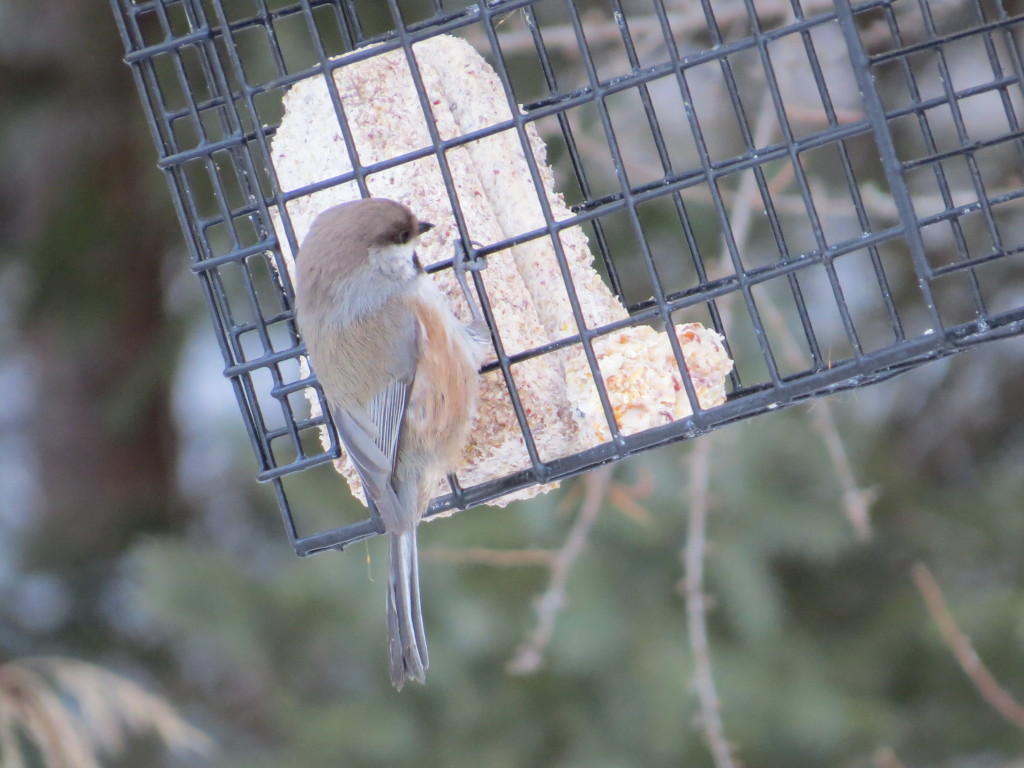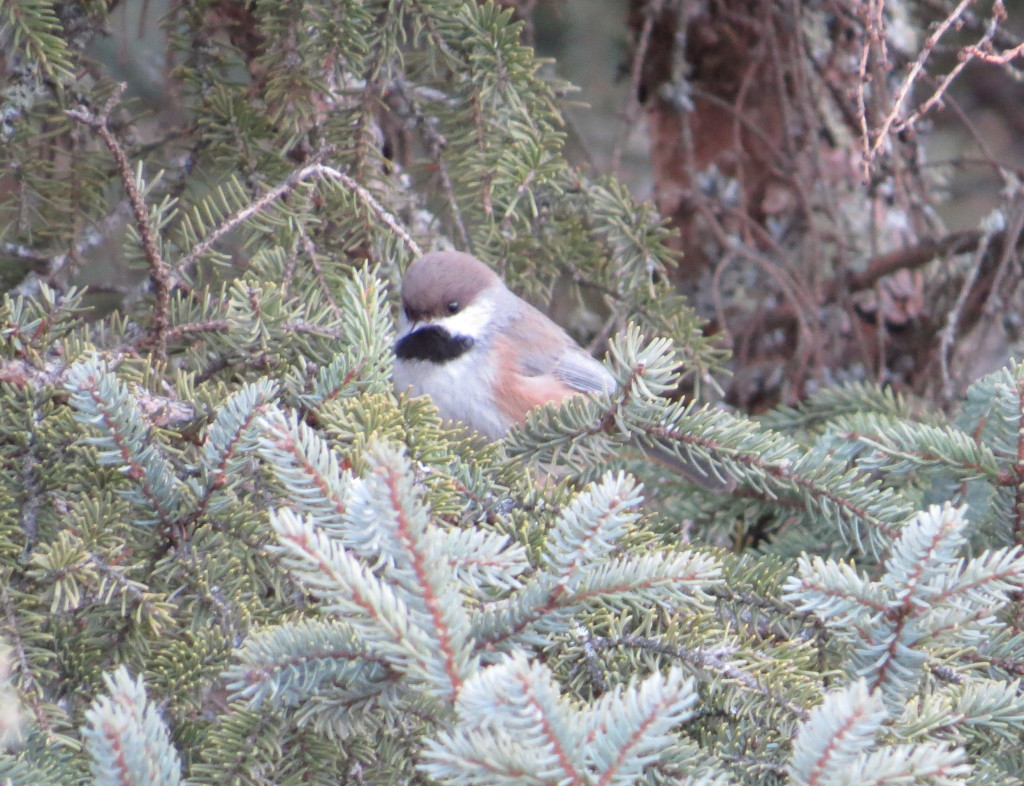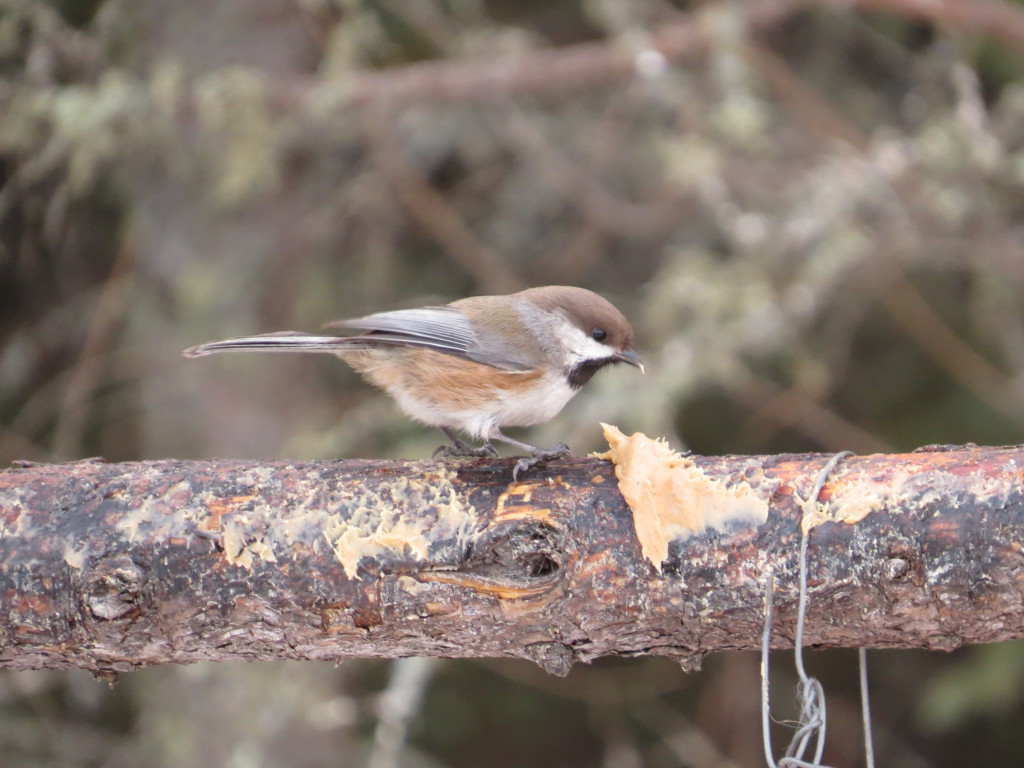No birding trip to northern Minnesota in the winter is complete without spending a significant amount of time in Duluth, MN and Superior, WI. Not only is it the most reliable place in this part of the state to find the Snowy Owls that Gordon Karre and Tommy DeBardelben craved, but it is also a place where one can rack up a sweet suite of winter Gulls and see some oddball vagrants such as the Golden-crowned Sparrow, Townsend’s Solitaire, and the impressive Gyrfalcon–or two or three this year. In short, Tommy, Gordon, and I had a lot of work to do in this urban birding environment, and we scheduled no less than a full day from dawn to dusk on our second day of the Tour de Nord.
Our day started with a search for the most reliable Snowy Owl in Superior, Wisconsin, the one that had been hanging out around the Richard Bong Airport and nearby parking lots of Menards and Aldi. The truth is, I wanted to secure this main target early in the day rather than waiting until the day was almost over. Alleviating the stress early and getting home earlier for a hot shower and a hot meal sounded dreamy. But I really wasn’t stressed about the Snowy Owl since we had success with the Great Gray the previous day and since I knew this species of Owl would be the easiest to get for Tommy and Gordon. Anyhow, we gave up our morning Snowy search after a couple hours to pursue some other targets. We would just have to get that SNOW in the evening. No biggie.
The thing about finding the really good birds in Duluth/Superior is that they are in some of the most sketchy places–industrial complexes, oil refineries, rail yards, landfills, etc. But we birders go where the birds go. Then a funny thing happens–we grow to like those places and even dream about them. A pristine, quiet stand of Red Pine next to an untouched, snow-covered northern lake? Forget about it. Bring on the garbage trucks, train cars, and smoke stacks!

Tommy, Gordon, and I made a stop at the Peavey grain elevators to look for its most impressive avian residents. After a short time, we finally spied Tommy and Gordon’s lifer Gyrfalcon fly in. Then it perched the closest to the road I’ve ever seen this bird perch. Normally it hangs out on the huge superstructure furthest from the road, but this time it split that distance in half and even flew across the road on which we stood.
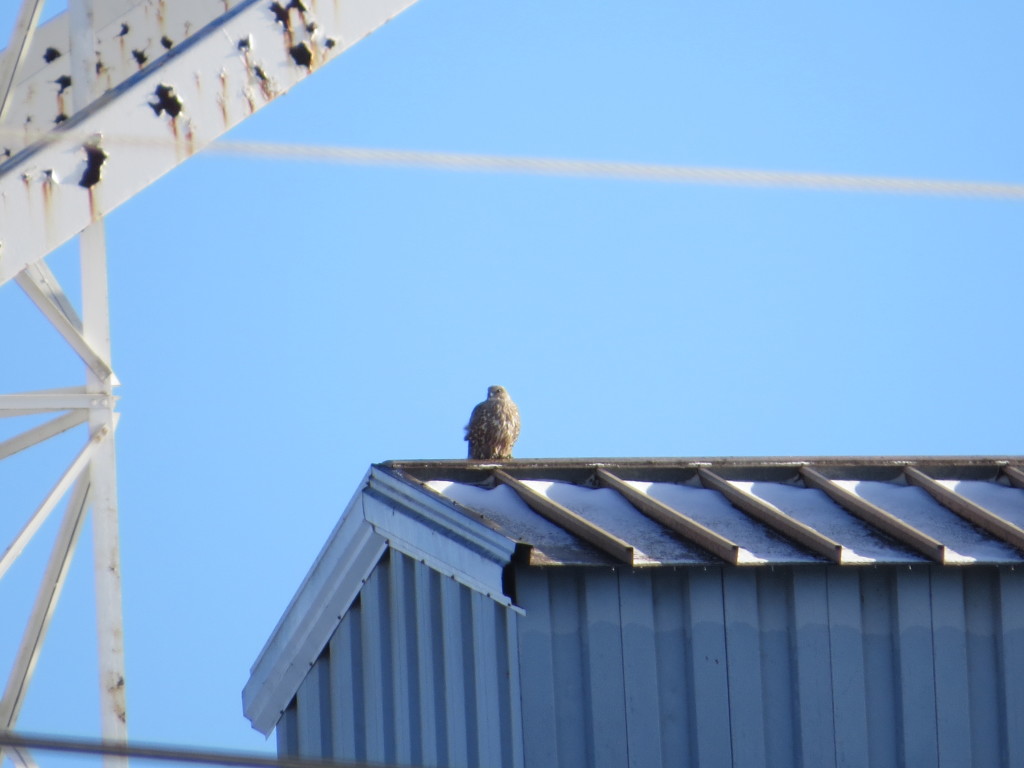
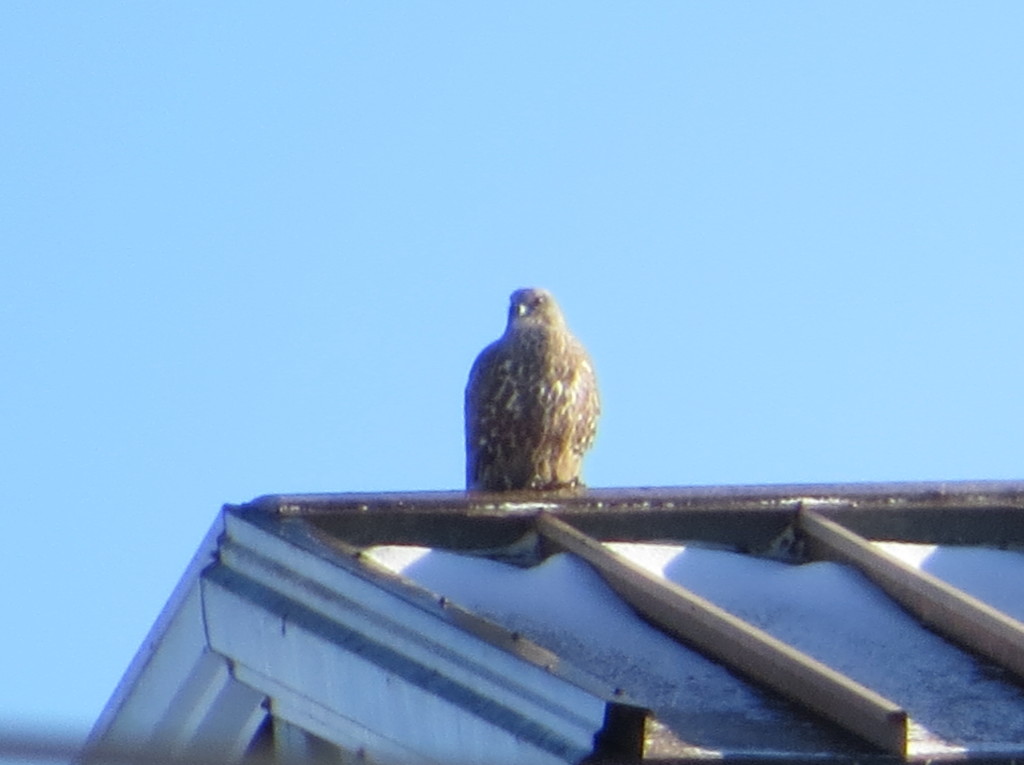 After this, we made a stop at Canal Park in Duluth to see what was going on Gull-wise. The guys picked up a handsome Thayer’s Gull lifer, but that was about it. I couldn’t even muster up a Black Duck for the guys. I did, however, do my Minnesota duty and made Tommy and Gordon skip rocks in Lake Superior.
After this, we made a stop at Canal Park in Duluth to see what was going on Gull-wise. The guys picked up a handsome Thayer’s Gull lifer, but that was about it. I couldn’t even muster up a Black Duck for the guys. I did, however, do my Minnesota duty and made Tommy and Gordon skip rocks in Lake Superior.
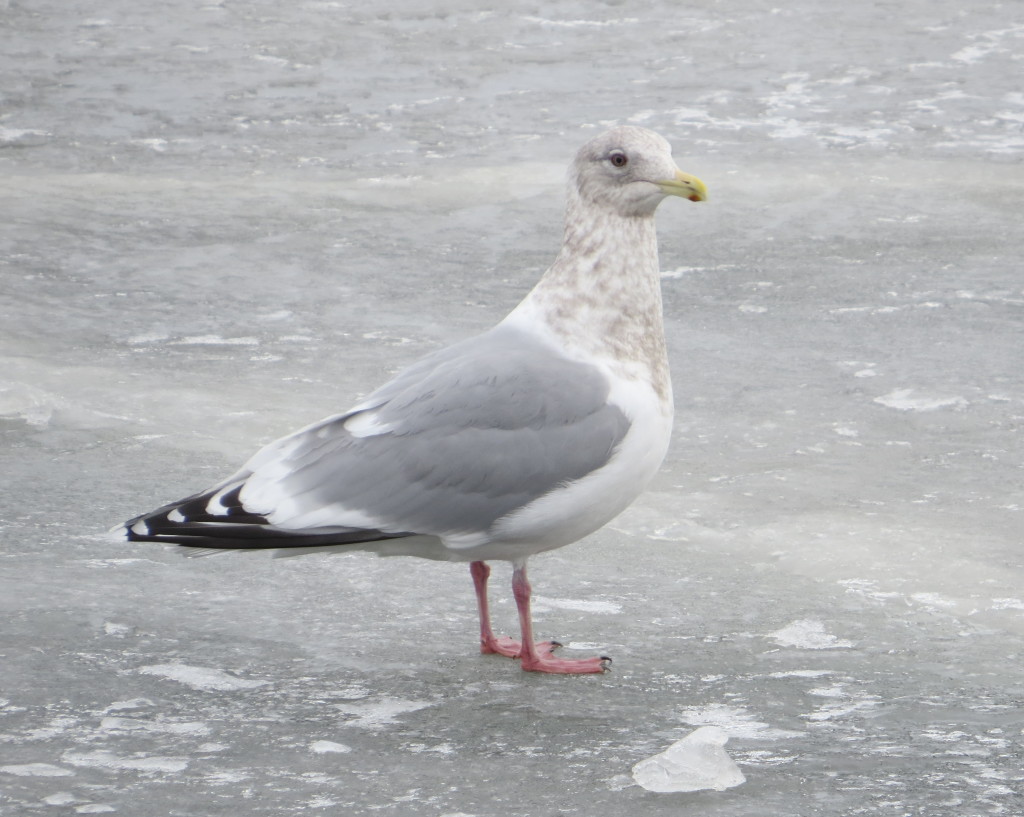
Now, there are still blog posts to be written, but Tommy and Gordon truly hit the jackpot with all their birds on this trip. They also hit the jackpot with the weather as it was unseasonably warm their entire trip–it was nearly 40 degrees ABOVE zero and SUNNY in Duluth this day. I don’t know if they can fully appreciate that. This dude gets it.
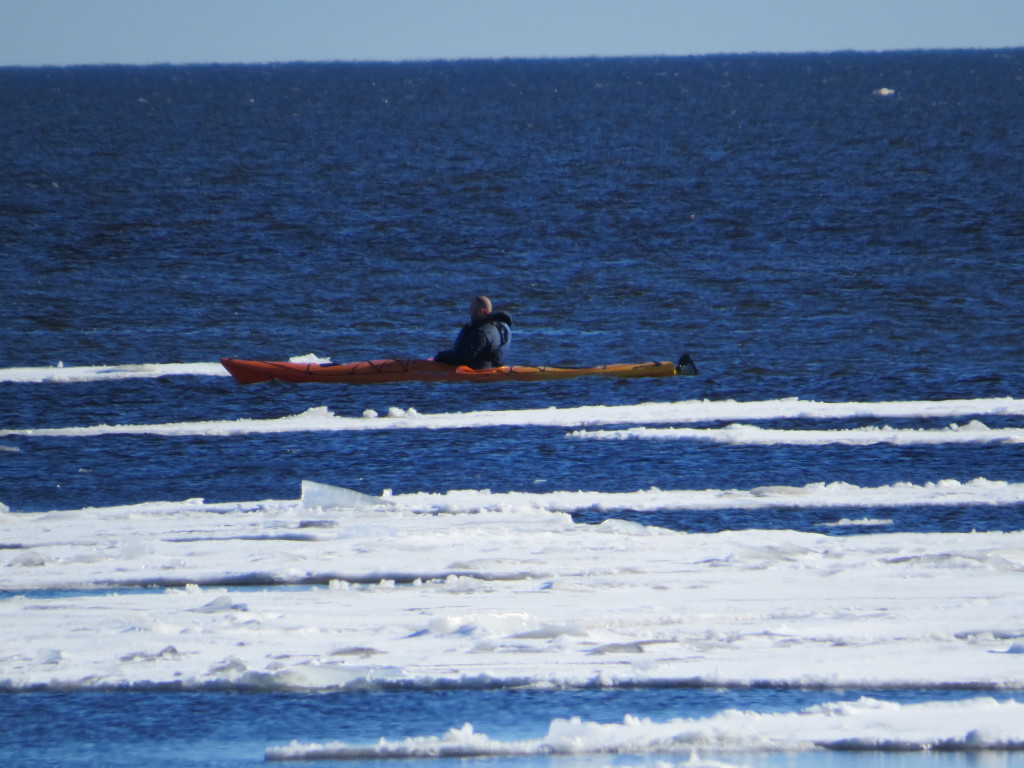
After Canal Park we went up the North Shore of Lake Superior 20 miles to the town of Two Harbors to look for some nomadic Bohemian Waxwings and see what was happening seaduck-wise on the lakefront. We struck out on those Bohemians, but once we got to Agate Bay we met Jim Lind, compiler of the Duluth RBA, who had his scope zeroed in on a handsome male Long-tailed Duck. It was way too far for photos, but the scope views were incredible. This was definitely my bird highlight of our Duluth Day.
By this time in the afternoon it was time to head back to Superior to begin our Snowy search in earnest. We had a little time to check out Canal Park for Gulls and Black Ducks. On the way, I got a text from Randy Frederickson that they had an Iceland Gull; Randy is a birding friend from where I live, but I had found out he was in town to study Thayer’s Gulls intently in the hopes of finally seeing one in our Kandiyohi County. I got a second text from Randy as we literally just parked the car at Canal Park: the Great Black-backed Gull had just come in! Score!
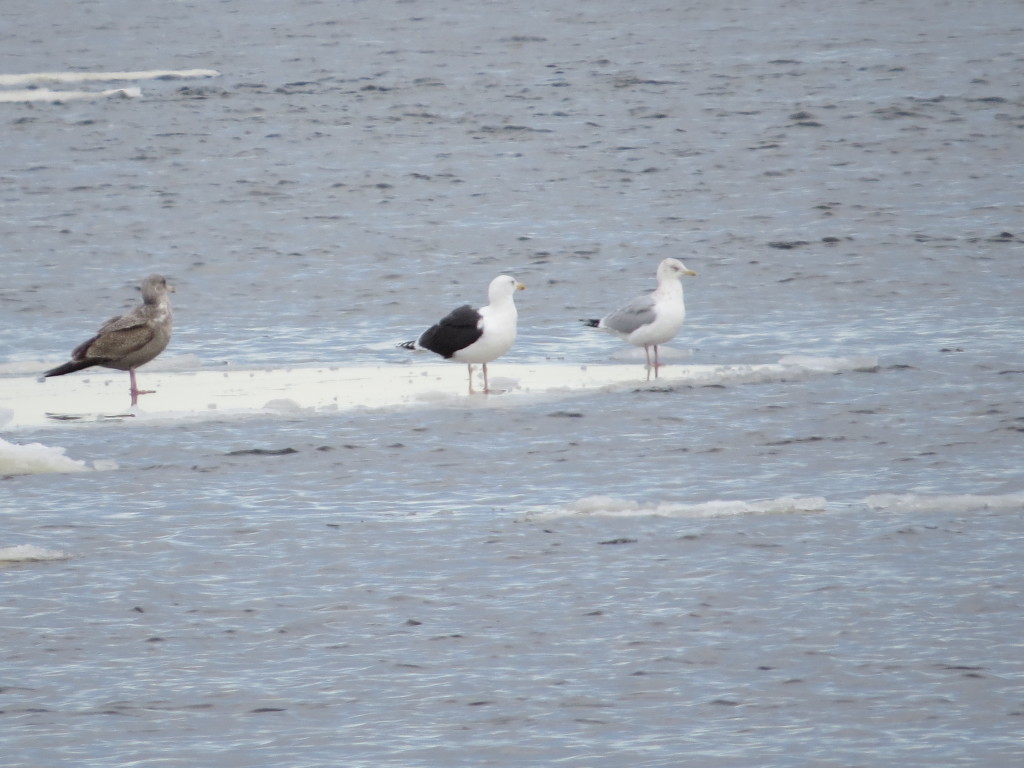 Tommy and Gordon quickly tallied this lifer as well as the Iceland Gull lifer. They also got to witness the spontaneous birder parties that happen at Canal Park as the who’s who of Duluth birders show up to enjoy the Gulls, look for the really wacko stuff (Ivory Gull, Black-legged Kittiwake), toss bread out to bring the Gulls closer, take orders for what Gulls everybody is still looking for, and generally be friendly tutors to those of us still illiterate in Gull identification. Peder Svingen, Clinton Nienhaus, and John Richardson were all on hand this particular afternoon to confirm species ID and point out the cool Gulls from the Herring herd. Even when some of us were distracted with trying to get a THGU/Lighthouse combo pic…
Tommy and Gordon quickly tallied this lifer as well as the Iceland Gull lifer. They also got to witness the spontaneous birder parties that happen at Canal Park as the who’s who of Duluth birders show up to enjoy the Gulls, look for the really wacko stuff (Ivory Gull, Black-legged Kittiwake), toss bread out to bring the Gulls closer, take orders for what Gulls everybody is still looking for, and generally be friendly tutors to those of us still illiterate in Gull identification. Peder Svingen, Clinton Nienhaus, and John Richardson were all on hand this particular afternoon to confirm species ID and point out the cool Gulls from the Herring herd. Even when some of us were distracted with trying to get a THGU/Lighthouse combo pic…
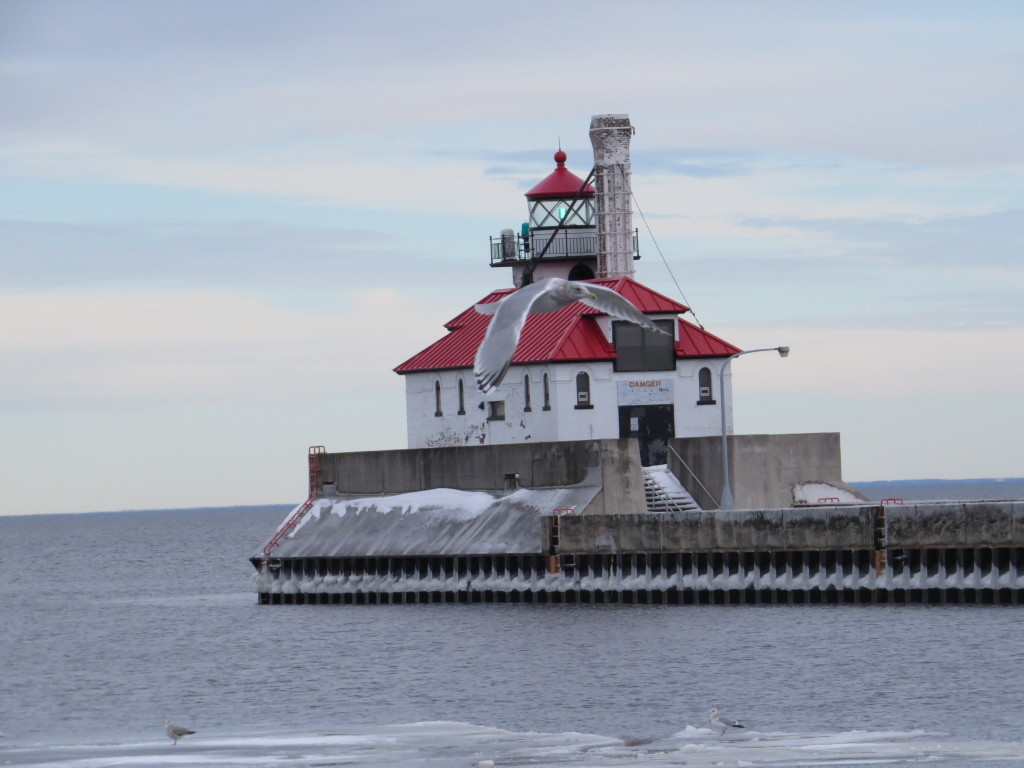
…Clinton was still keeping an eye to the horizon. All of the sudden, Clinton made a cheerful announcement to the three of us, “Gu-uys! Glaucous coming in!” It was a lifer for Gordon and gave the AZ guys the Winter Gull Grand Slam.
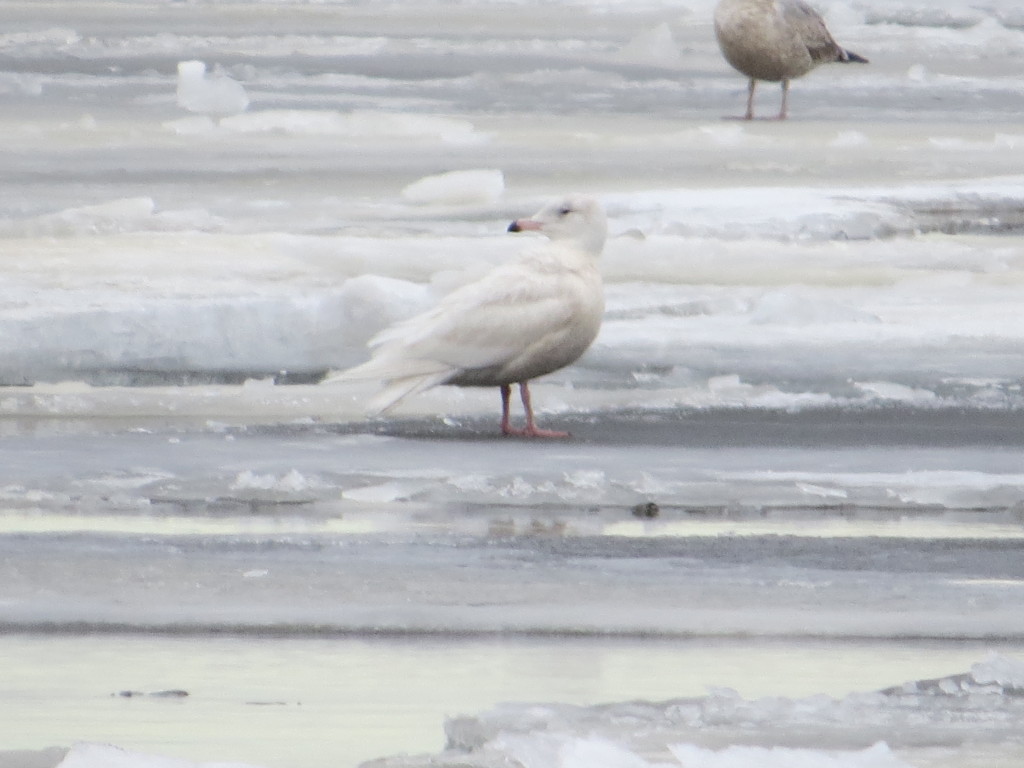
Finally, though, it was time to get back to priority one for this day: Snowy Owl searching. Peder Svingen gave me some great last-minute tips on a couple of birds in Superior. He was spot-on. Tommy quickly found one of those Snowies perched up giving them one of their most-wanted lifers and giving me another huge wave of relief. While viewing it, birding guide Kim Risen stopped to talk, and he pointed us in the direction of a second bird in the area and asked what else we were still looking for. The generosity of MN birders continues to impress me even though I’ve seen it over and over. Here’s the bird Kim had for us.
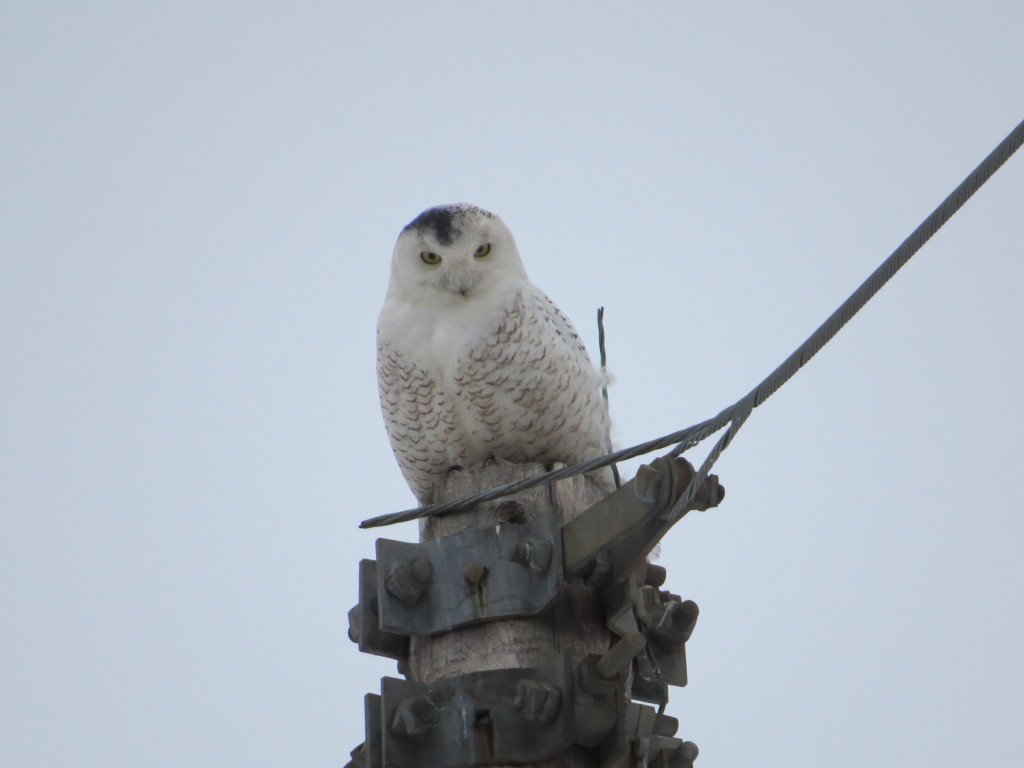 Can you spy Tommy, Gordon, and the Snowy Owl in this photo?
Can you spy Tommy, Gordon, and the Snowy Owl in this photo?

The good thing about Snowy Owls in the Twin Ports is that they are fairly easy to come by. The bad thing is that most all of them have been caught, tagged with a number, and marked with shoe polish on their heads by bird bander Dave Evans who has been studying them for 40 years.
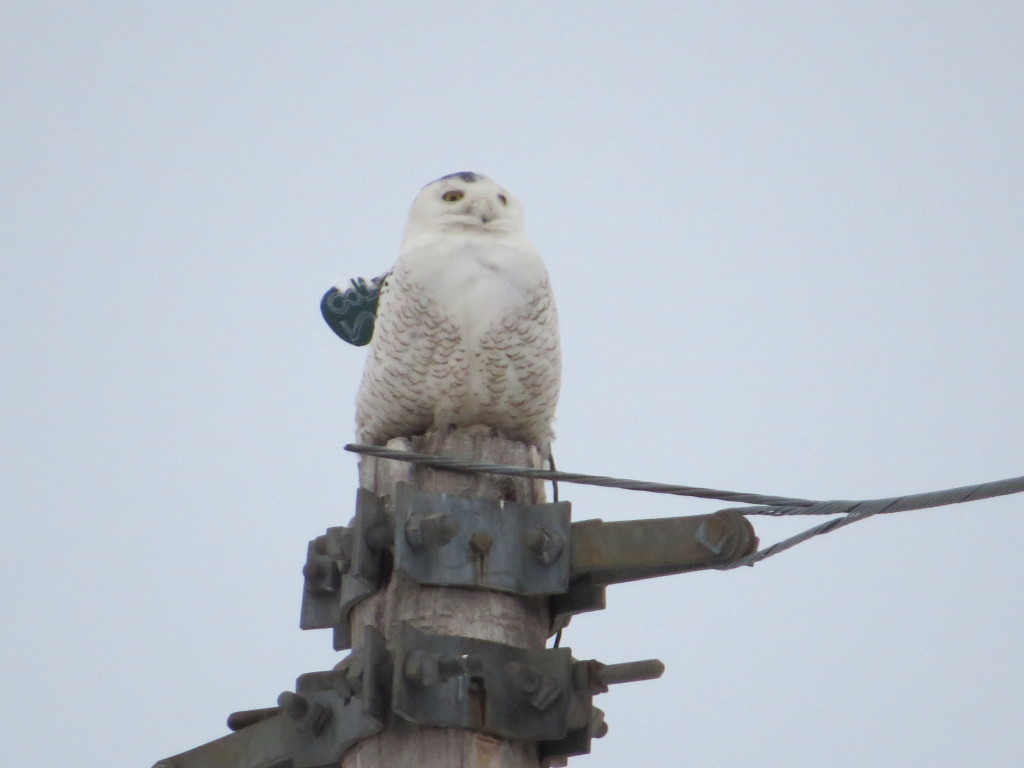 The wing tags help Dave monitor and identify the Owls from afar without having to stress them with recapture. Here is the first Snowy Owl we saw just before #28 above.
The wing tags help Dave monitor and identify the Owls from afar without having to stress them with recapture. Here is the first Snowy Owl we saw just before #28 above.
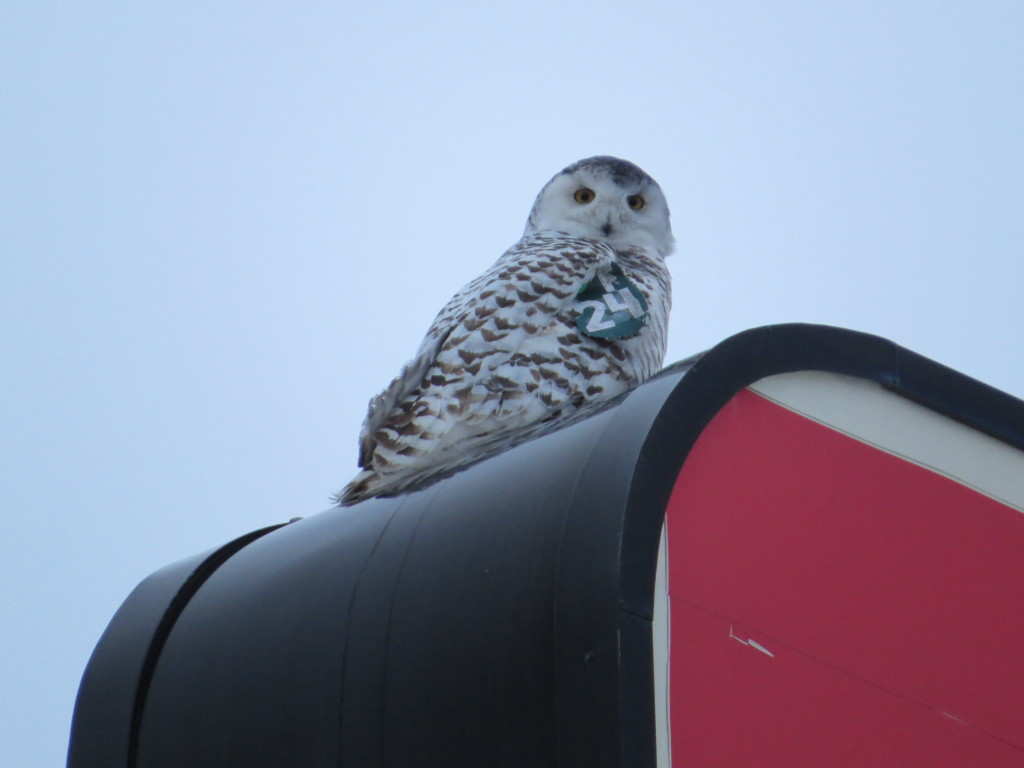 I wish Tommy and Gordon could have seen unmarked Snowy Owls, but a marked Snowy seen is better than an unmarked Snowy not seen! Ironically, these were the first marked Snowy Owls I had ever seen in real life. Tommy and Gordon did get to gain an appreciation for the types of urban habitats these birds often winter in.
I wish Tommy and Gordon could have seen unmarked Snowy Owls, but a marked Snowy seen is better than an unmarked Snowy not seen! Ironically, these were the first marked Snowy Owls I had ever seen in real life. Tommy and Gordon did get to gain an appreciation for the types of urban habitats these birds often winter in.
 It was another rocking day of birding in the north that met or even exceeded expectations. Notable misses included American Black Duck and Bohemian Waxwing. On a sad, personal note, my Kittiwake lifer did not make an appearance. Here is a run-down of the second day’s lifers:
It was another rocking day of birding in the north that met or even exceeded expectations. Notable misses included American Black Duck and Bohemian Waxwing. On a sad, personal note, my Kittiwake lifer did not make an appearance. Here is a run-down of the second day’s lifers:
Gyrfalcon – Tommy, Gordon
Thayer’s Gull – Tommy, Gordon
Iceland Gull – Tommy, Gordon
Great Black-backed Gull – Tommy, Gordon
Glaucous Gull – Gordon
Snowy Owl – Tommy, Gordon
Once again, a great team of Minnesota birders helped Tommy and Gordon have a memorable day. I’d like to thank Jim Lind for pointing out the Long-tailed Duck, Peder Svingen for his Snowy Owl tips and his Gull identification tutorials, Randy Frederickson for his heads-up texts on the Iceland and Great Black-backed Gulls, Clinton Nienhaus for alerting us to the Glaucous Gull, John Richardson for being another set of eyes at Canal Park, and Kim Risen for the bonus Snowy Owl. This birding community is the best!
Coming up is a post about the day of northern birding I was looking forward to the most. I myself was going into new birding territory as we would have to venture way up into Northwest Minnesota in our pursuit of the guys’ Northern Hawk Owl lifer.

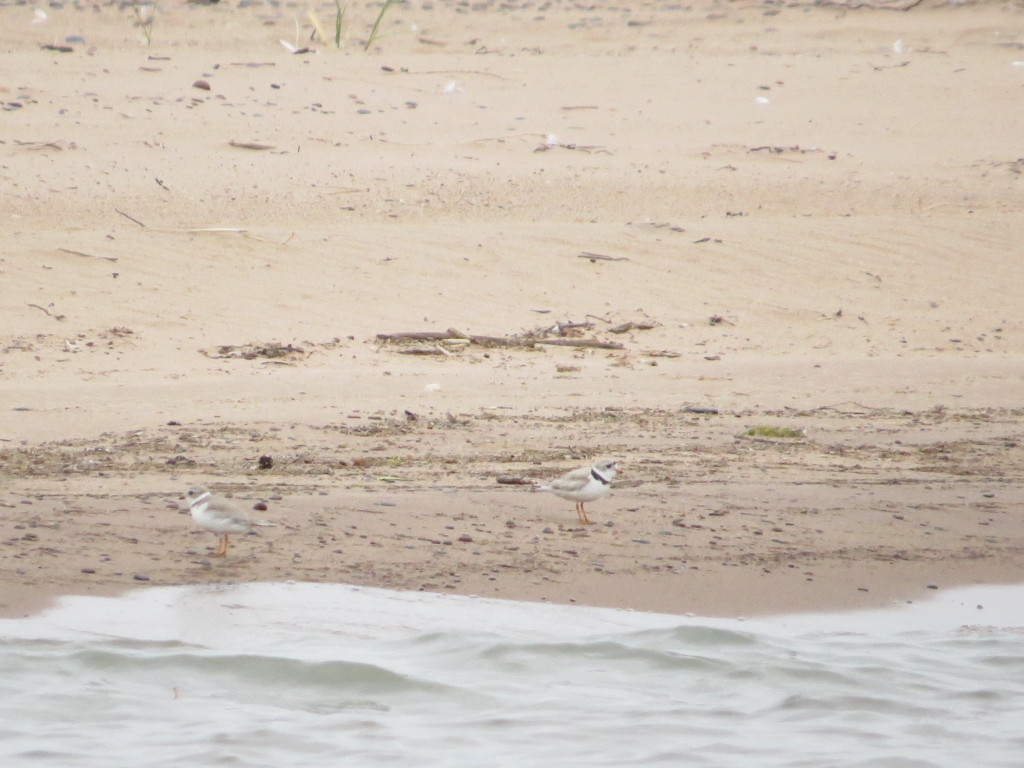
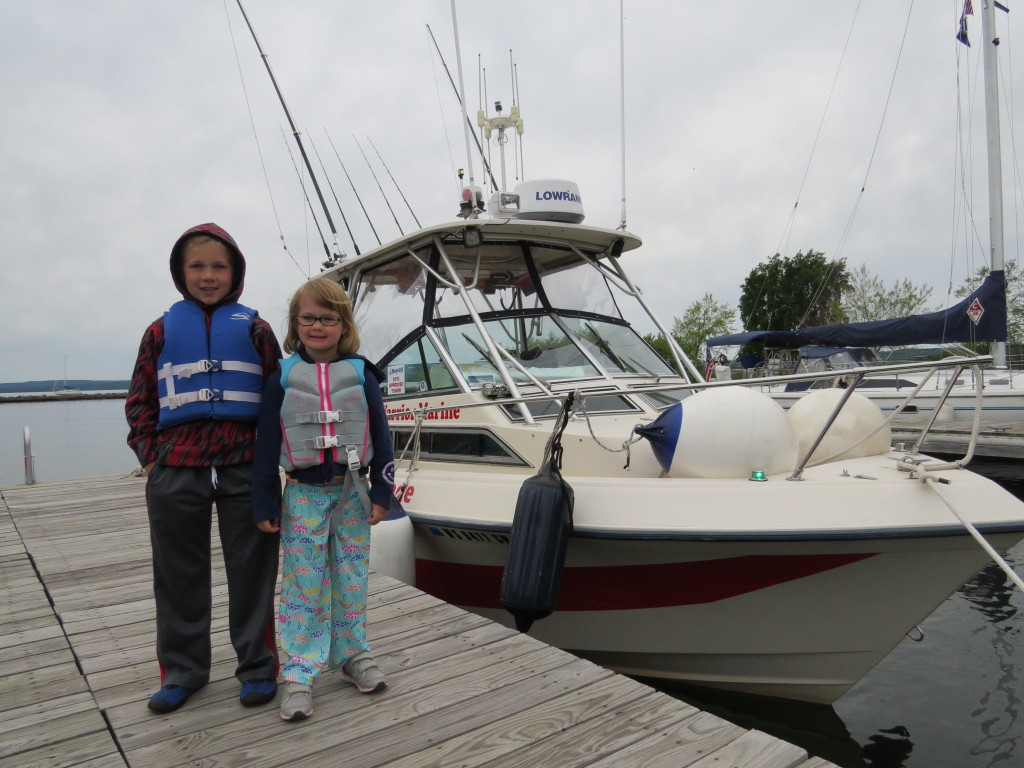
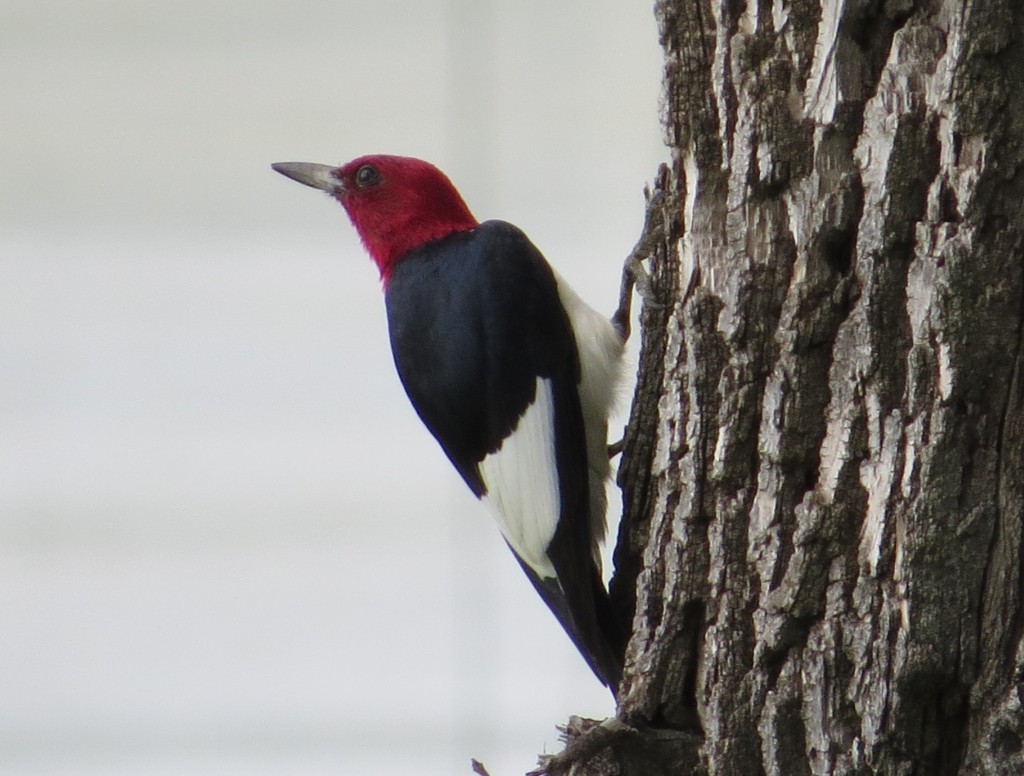
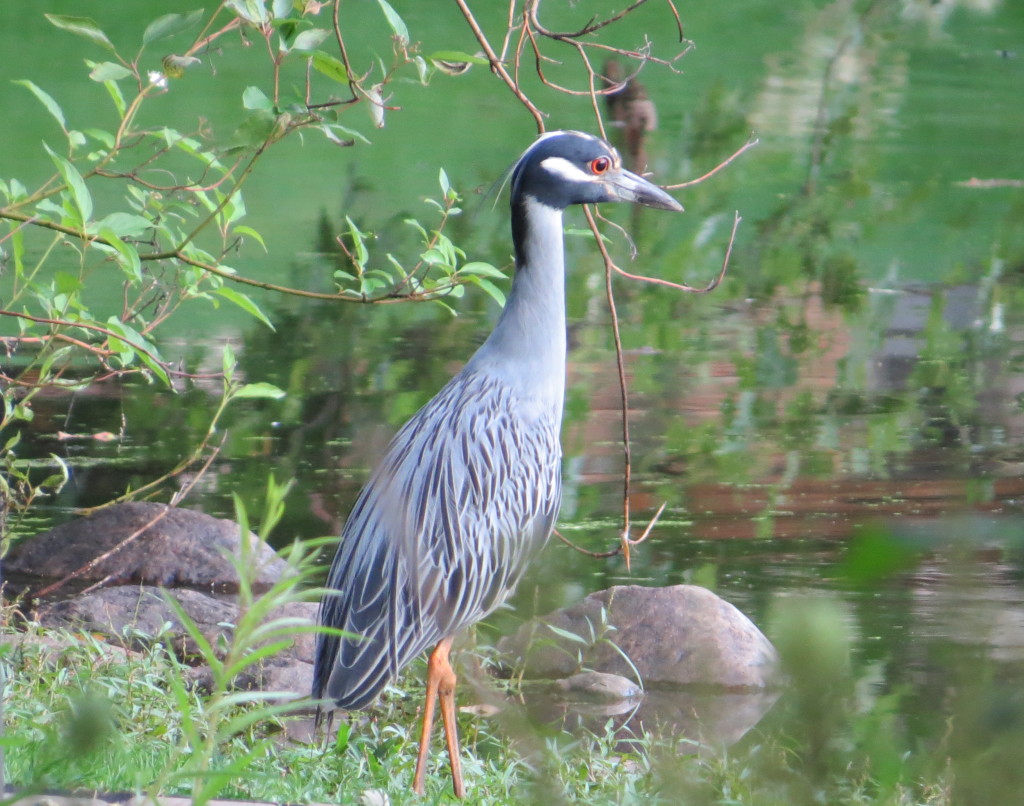
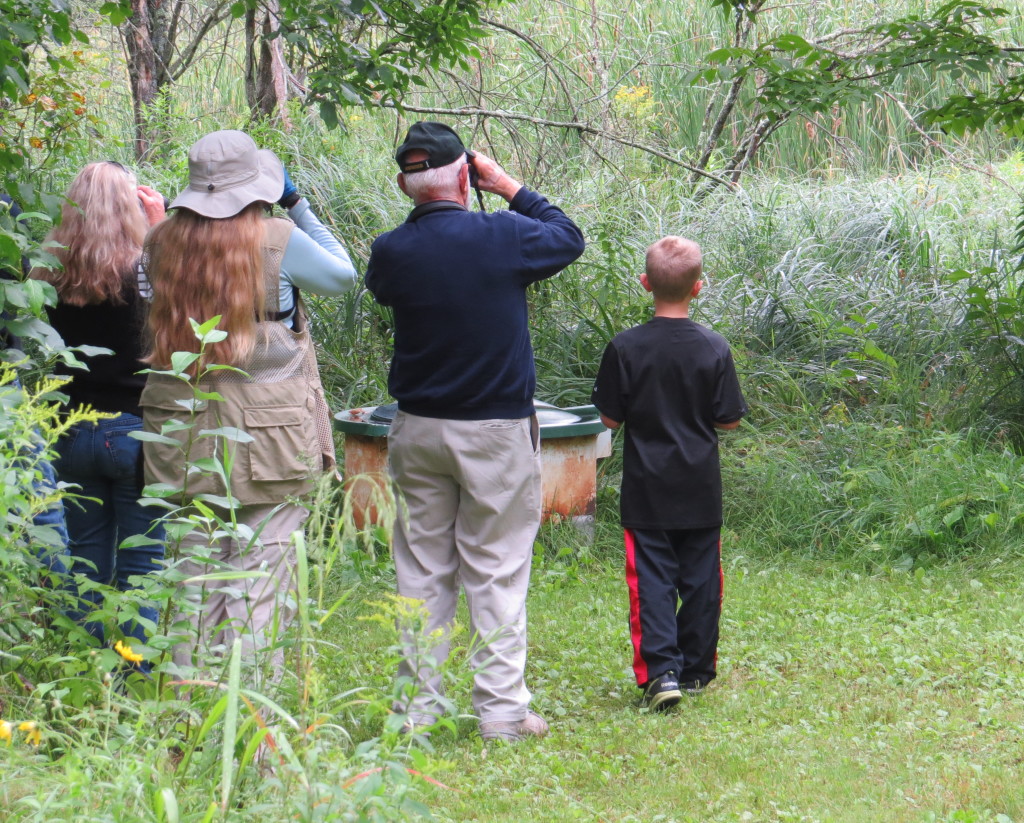
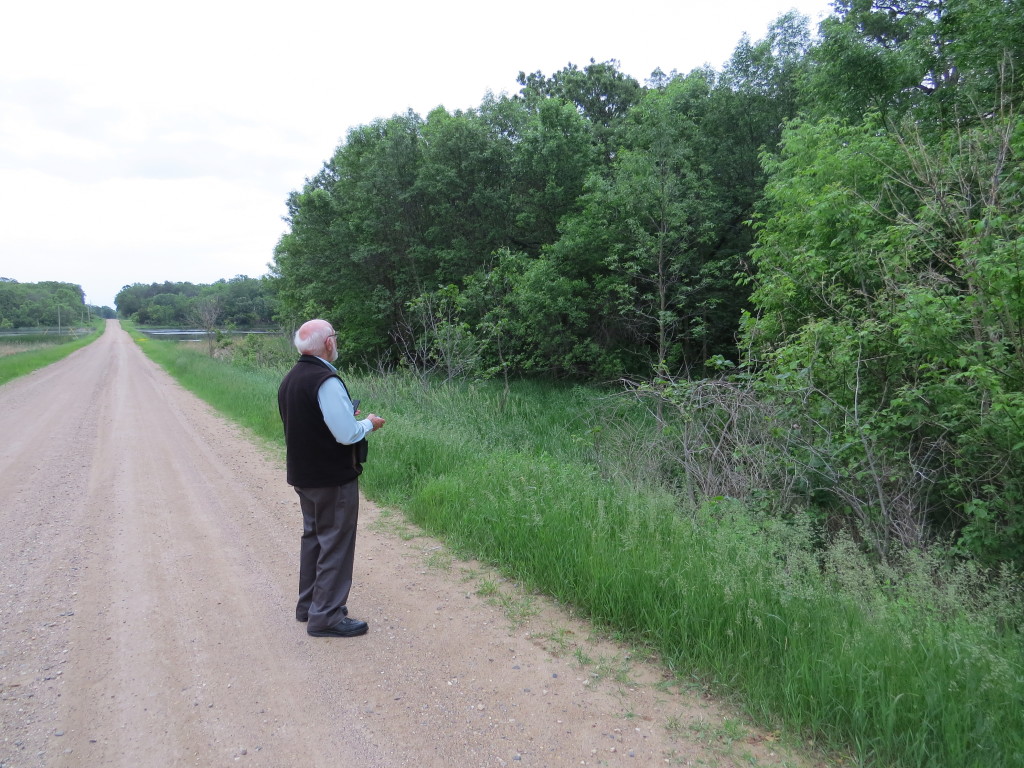
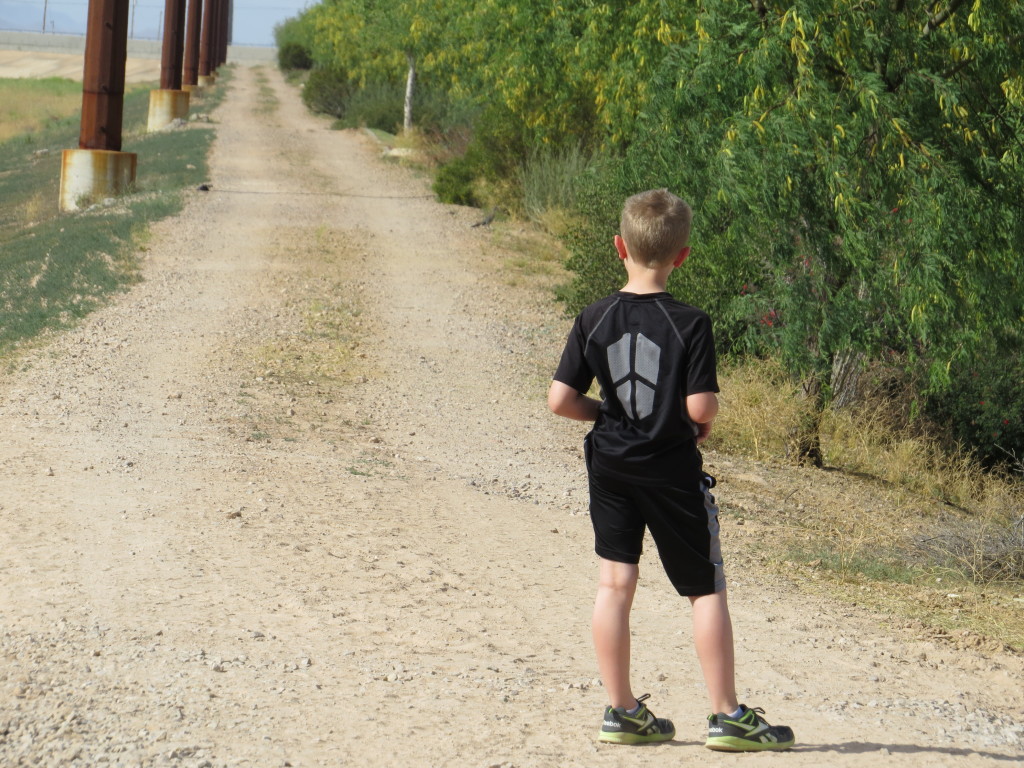
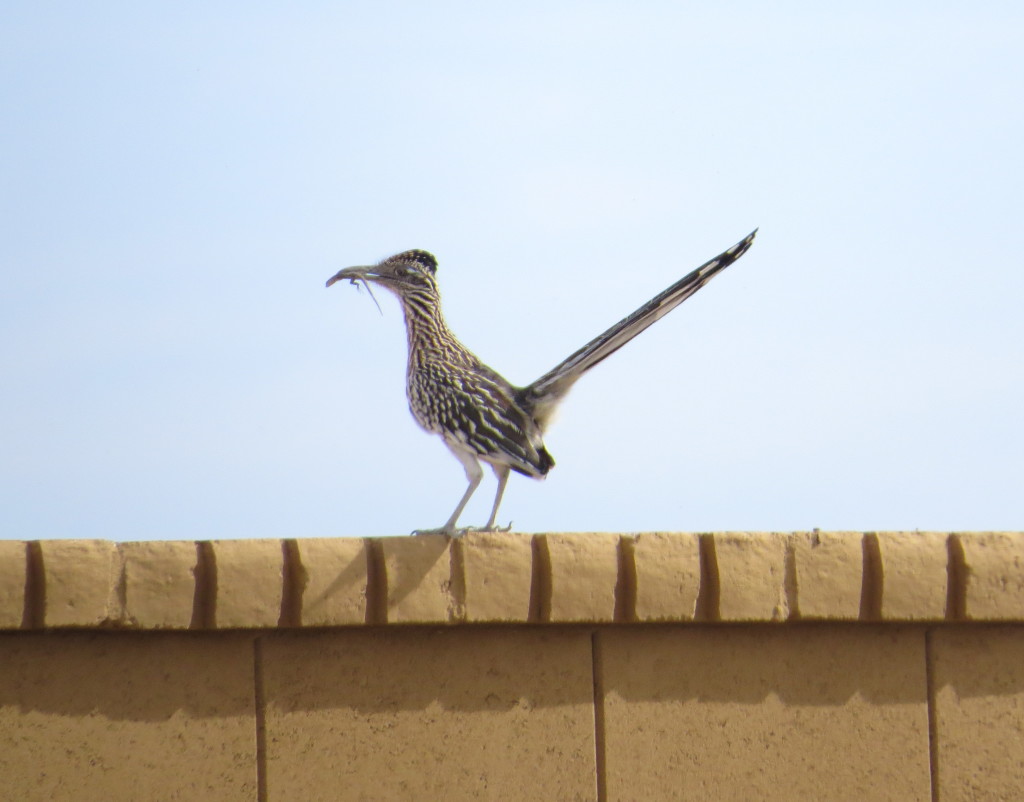
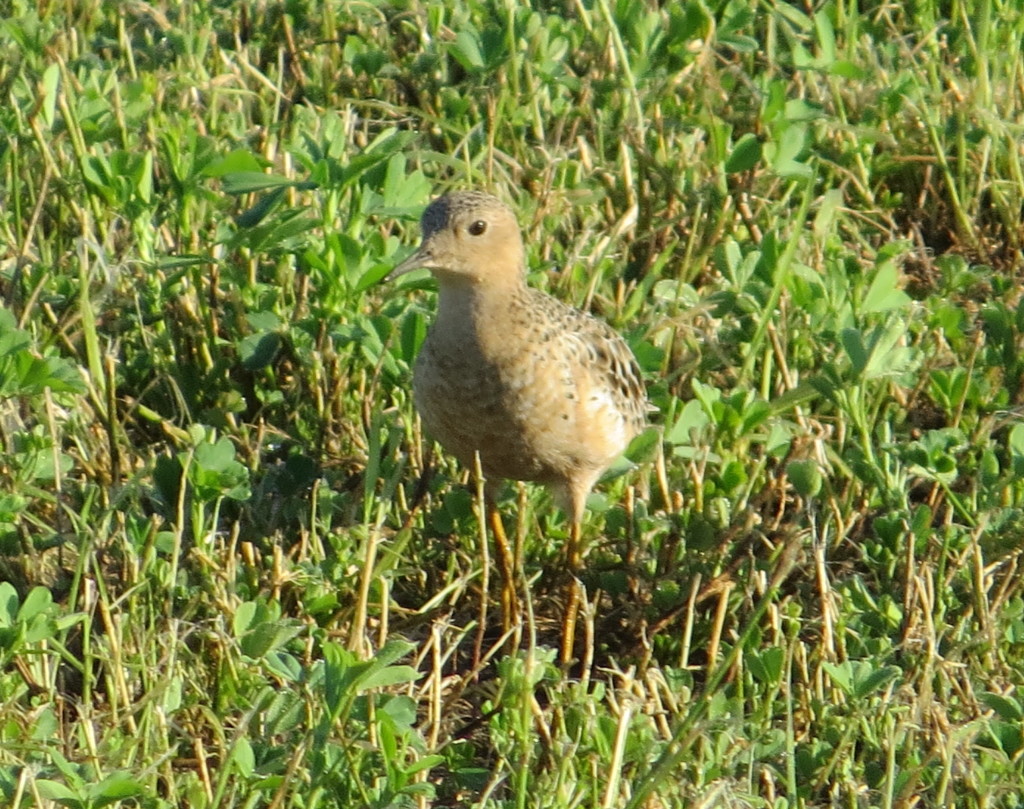
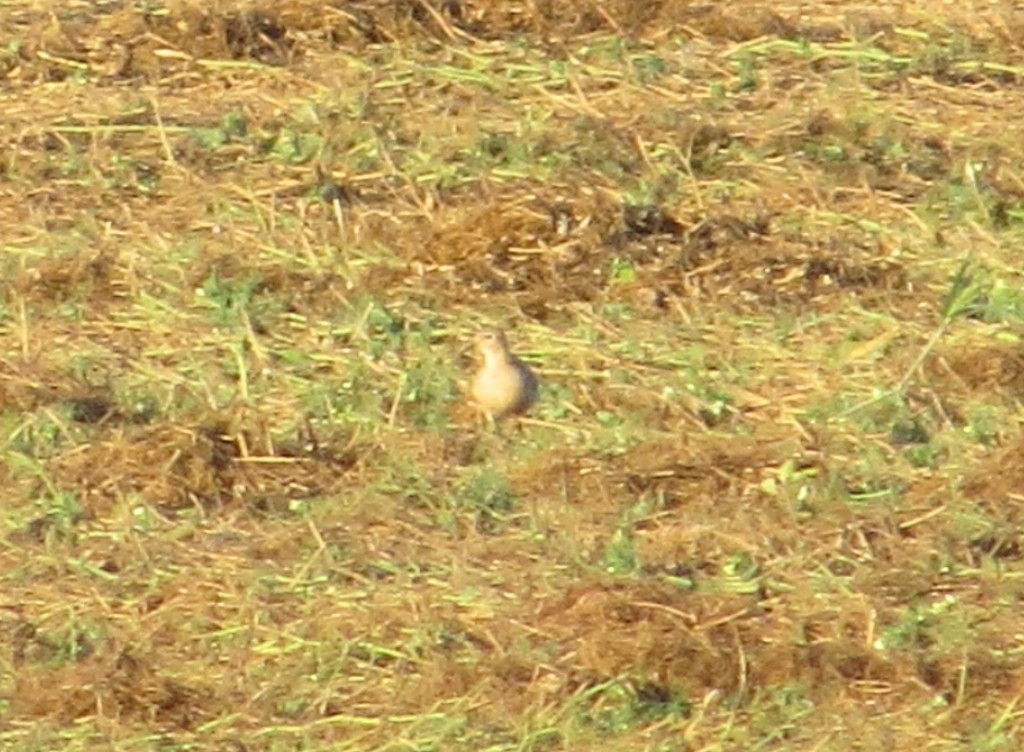
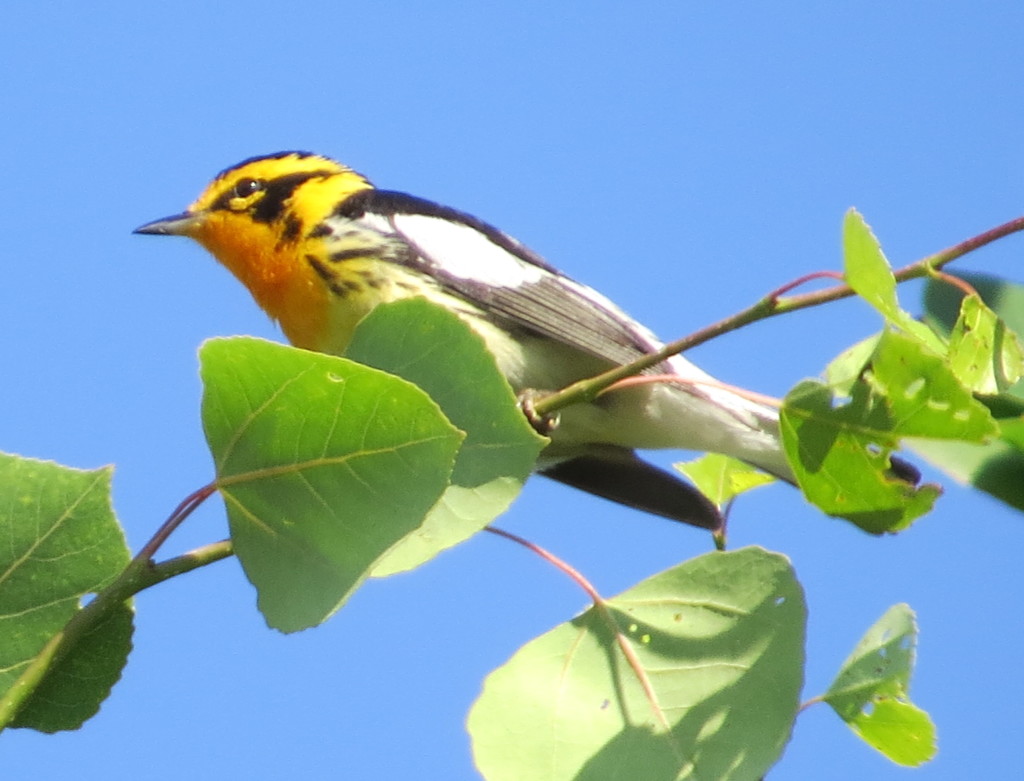
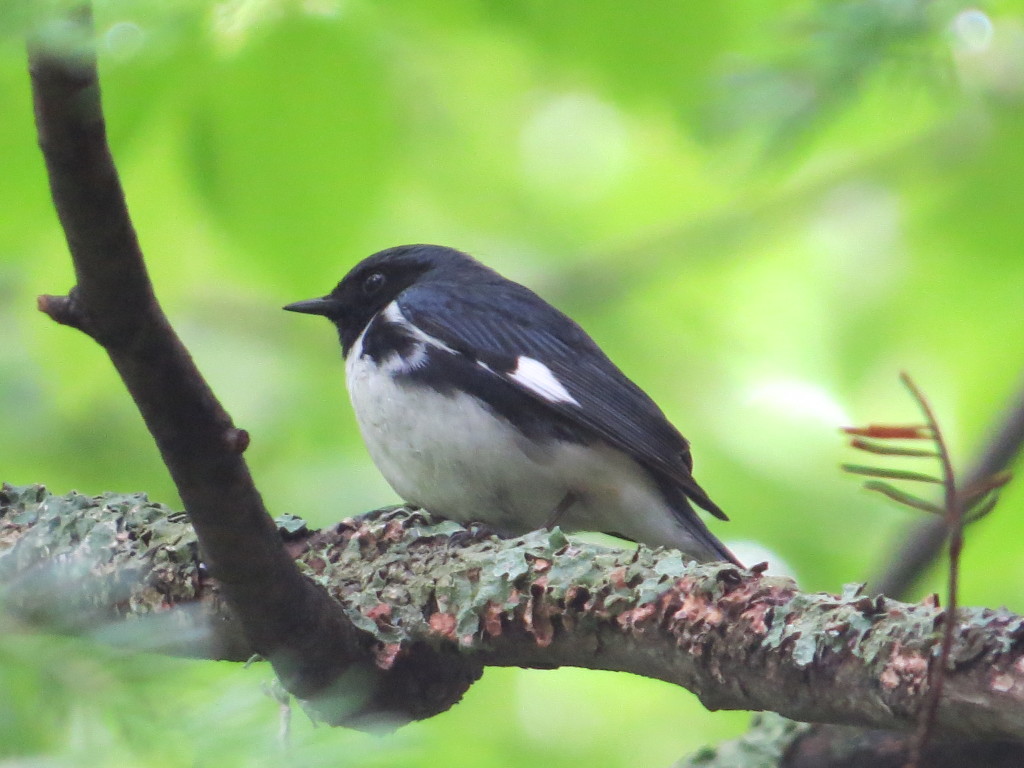
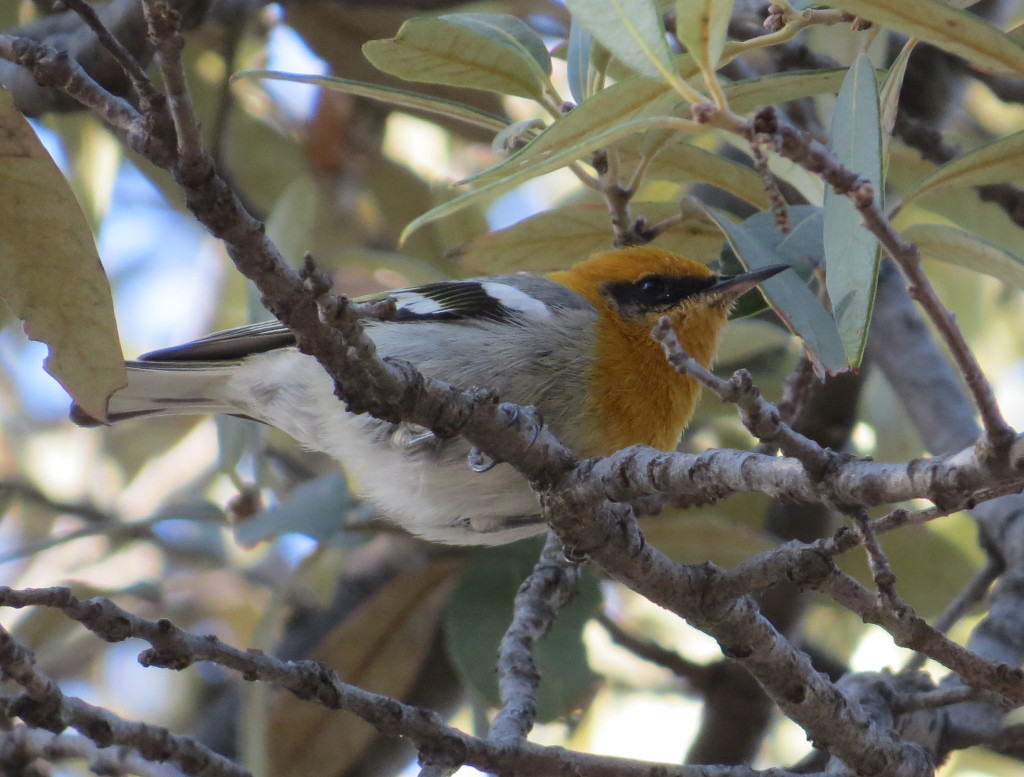
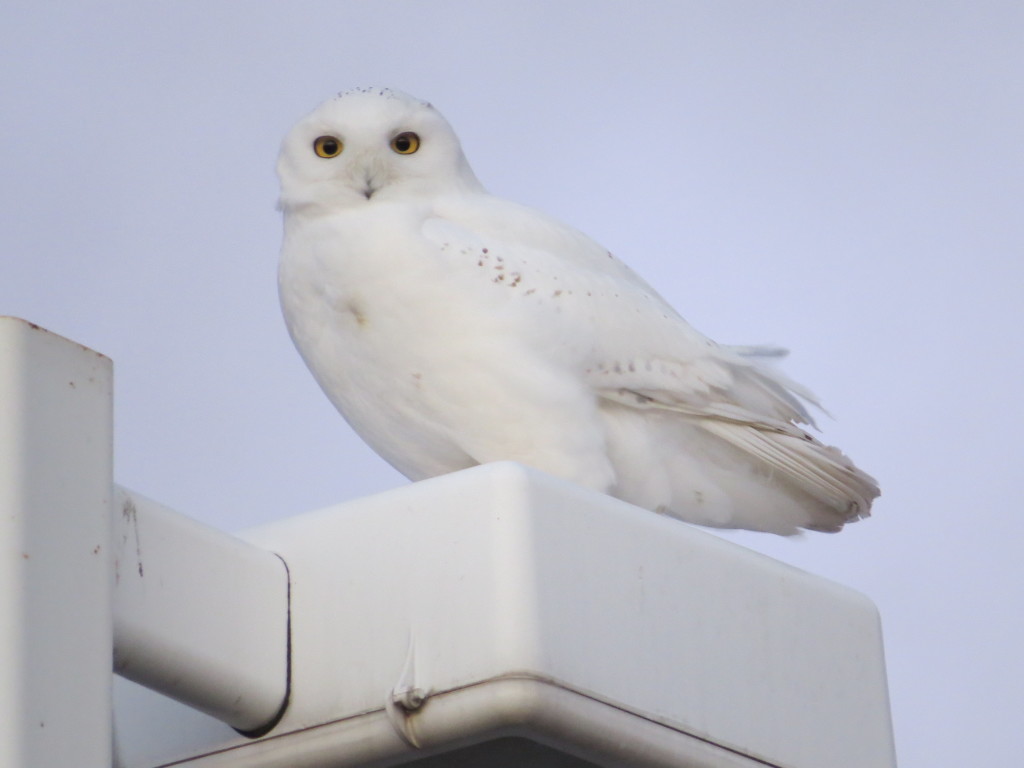
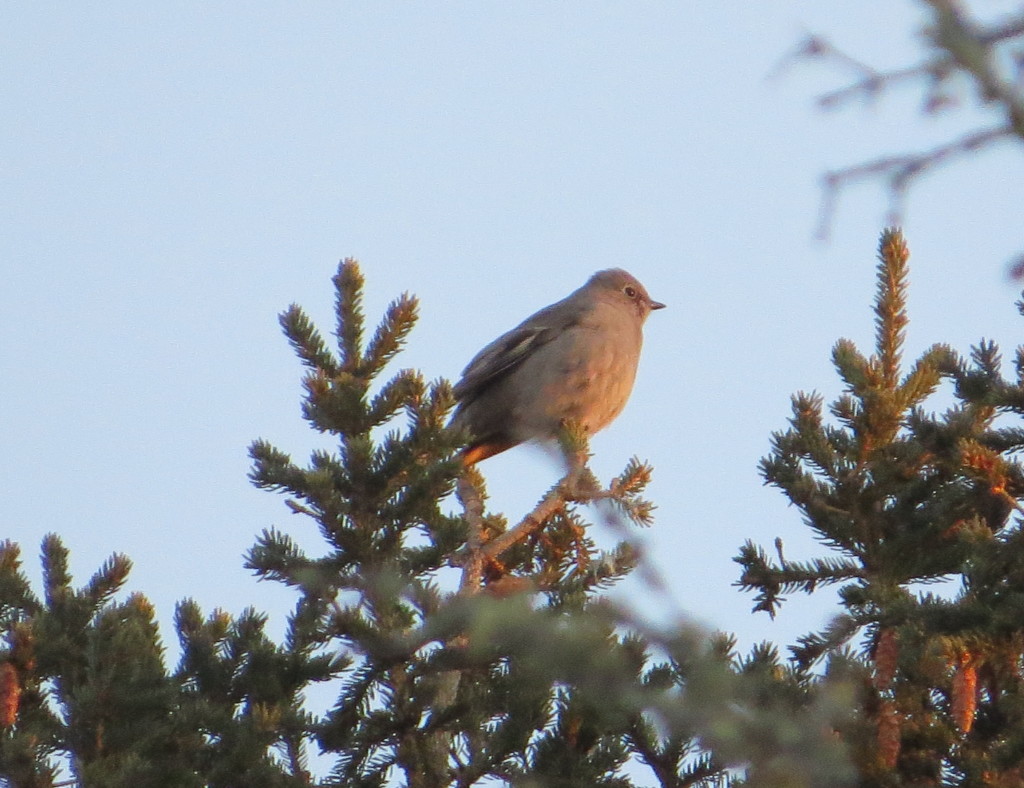 My first lifer for 2015 was a Townsend’s Solitaire, but that’s not why this bird is here. The reason this bird made the cut is that I found one on my own in the old hometown. That’s a pretty sweet feeling on multiple levels.
My first lifer for 2015 was a Townsend’s Solitaire, but that’s not why this bird is here. The reason this bird made the cut is that I found one on my own in the old hometown. That’s a pretty sweet feeling on multiple levels.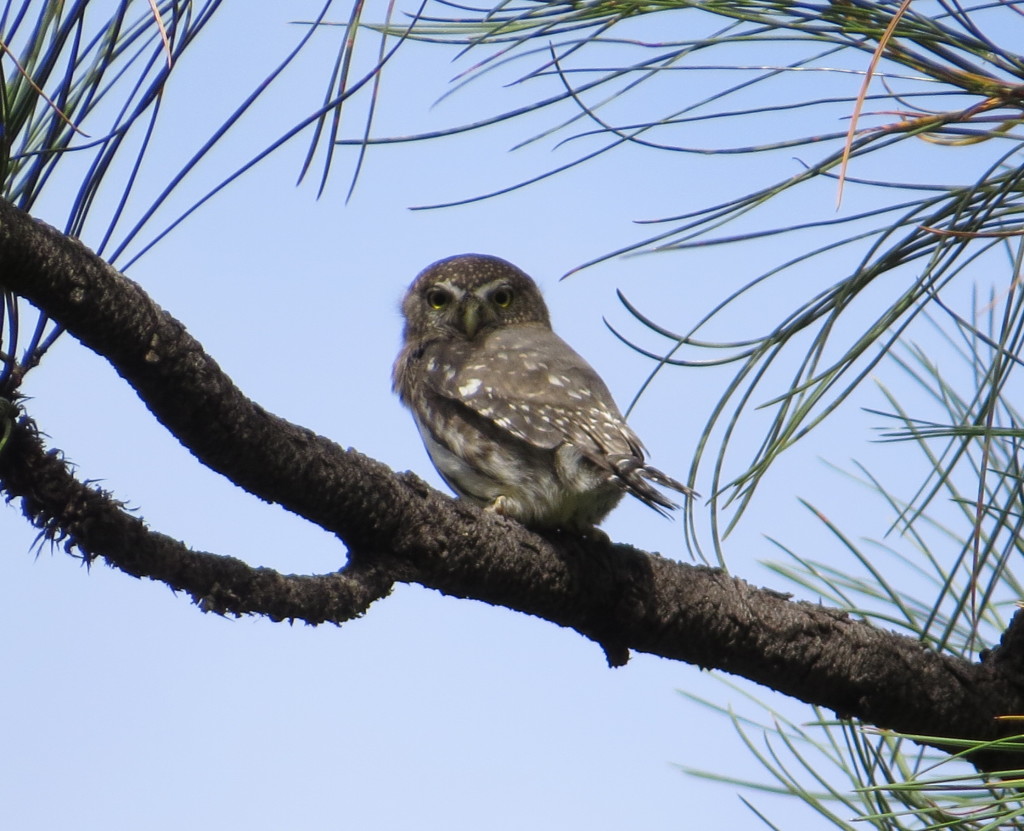 I had five Owl lifers in 2015. In an ordinary year, they’d all deserve one of the top 10 slots. Spotted Owl should probably occupy this slot because of its threatened status, but I just really enjoyed seeing this Pygmy in Hunter Canyon. This tiny Owl was cool just by itself, but the experience made it even better. This is just one of the dozens of life birds that Tommy DeBardeleben and Gordon Karre found for us. Just as much fun as seeing these birds was becoming friends with these guys. There is no doubt that we will have many more adventures together in 2016.
I had five Owl lifers in 2015. In an ordinary year, they’d all deserve one of the top 10 slots. Spotted Owl should probably occupy this slot because of its threatened status, but I just really enjoyed seeing this Pygmy in Hunter Canyon. This tiny Owl was cool just by itself, but the experience made it even better. This is just one of the dozens of life birds that Tommy DeBardeleben and Gordon Karre found for us. Just as much fun as seeing these birds was becoming friends with these guys. There is no doubt that we will have many more adventures together in 2016.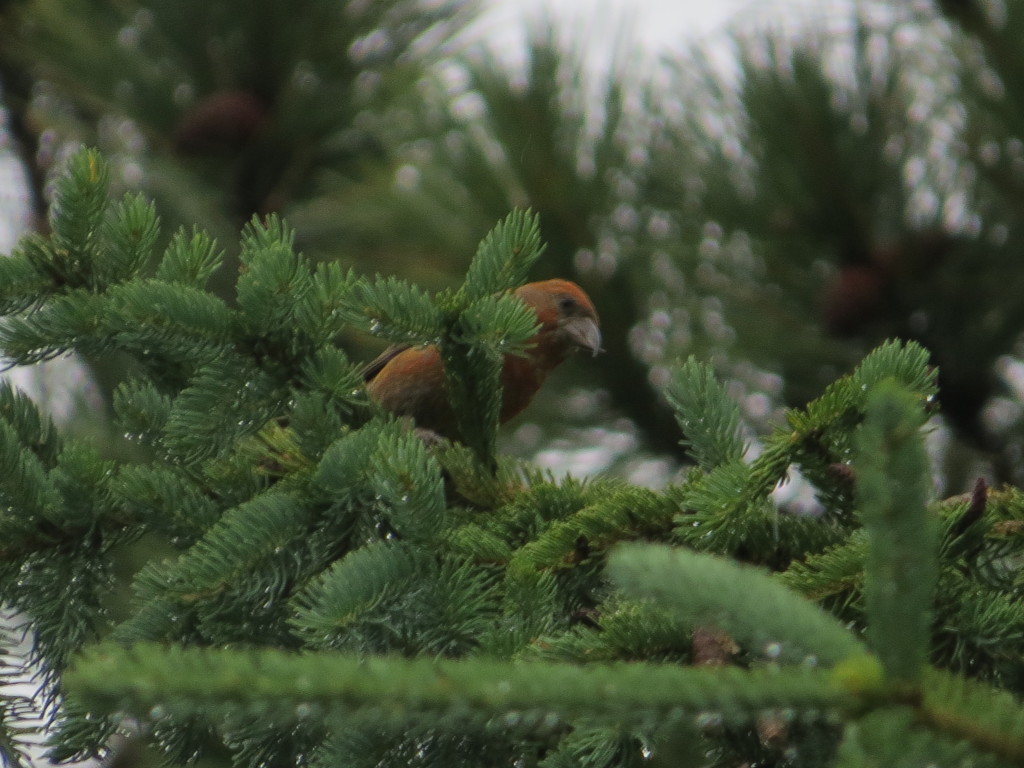
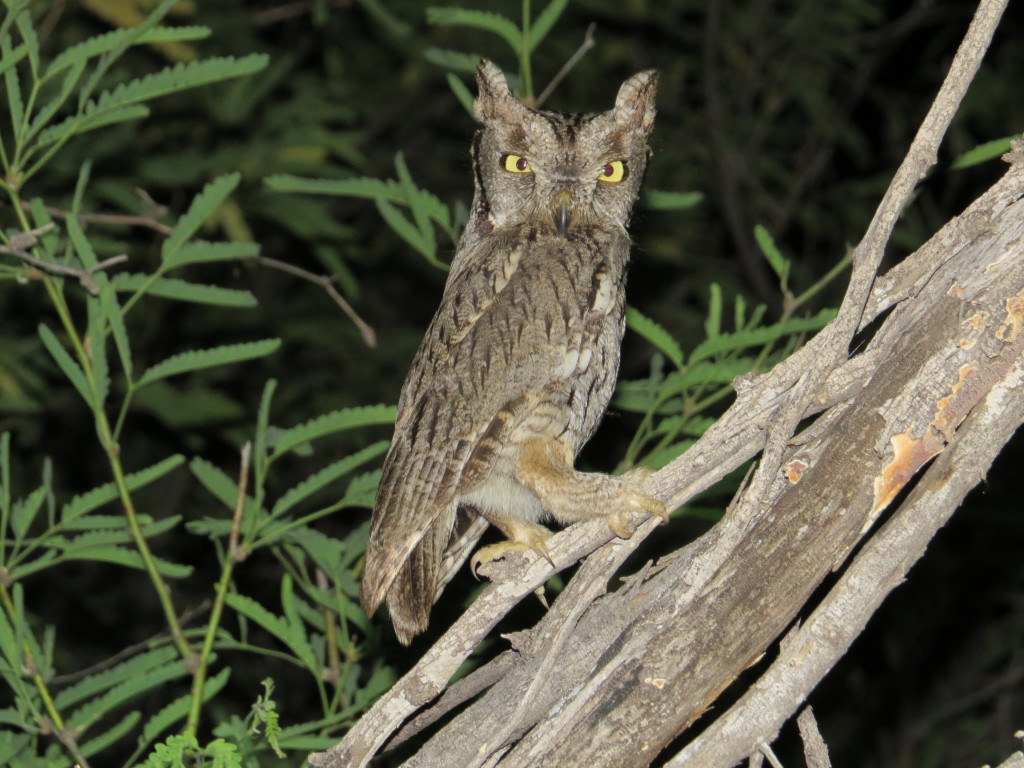 This is probably one of the most common Owls of all my Owl lifers. But rarity status alone does not make for the best experiences. What made this bird so fun was the context in which it occurred. First, night-birding with flashlights adds a whole new level excitement to this hobby. Chris Rohrer said it best when he said it makes you feel like a little kid again to be outside after dark past bedtime. Second, this Owl was so cooperative for Tommy DeBardeleben and me that we got to pose for some laughter-inducing selfies. This is probably the most fun I’ve ever had birding.
This is probably one of the most common Owls of all my Owl lifers. But rarity status alone does not make for the best experiences. What made this bird so fun was the context in which it occurred. First, night-birding with flashlights adds a whole new level excitement to this hobby. Chris Rohrer said it best when he said it makes you feel like a little kid again to be outside after dark past bedtime. Second, this Owl was so cooperative for Tommy DeBardeleben and me that we got to pose for some laughter-inducing selfies. This is probably the most fun I’ve ever had birding.
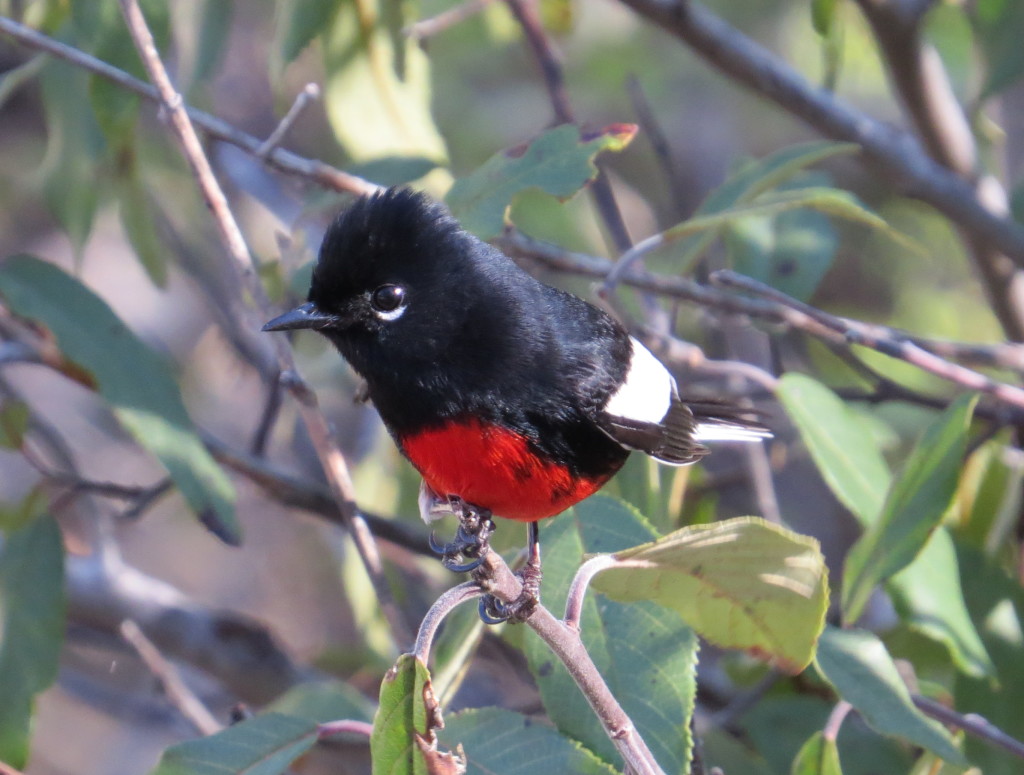 Wow. Just wow. Seeing them at my feet? Unbelievable.
Wow. Just wow. Seeing them at my feet? Unbelievable.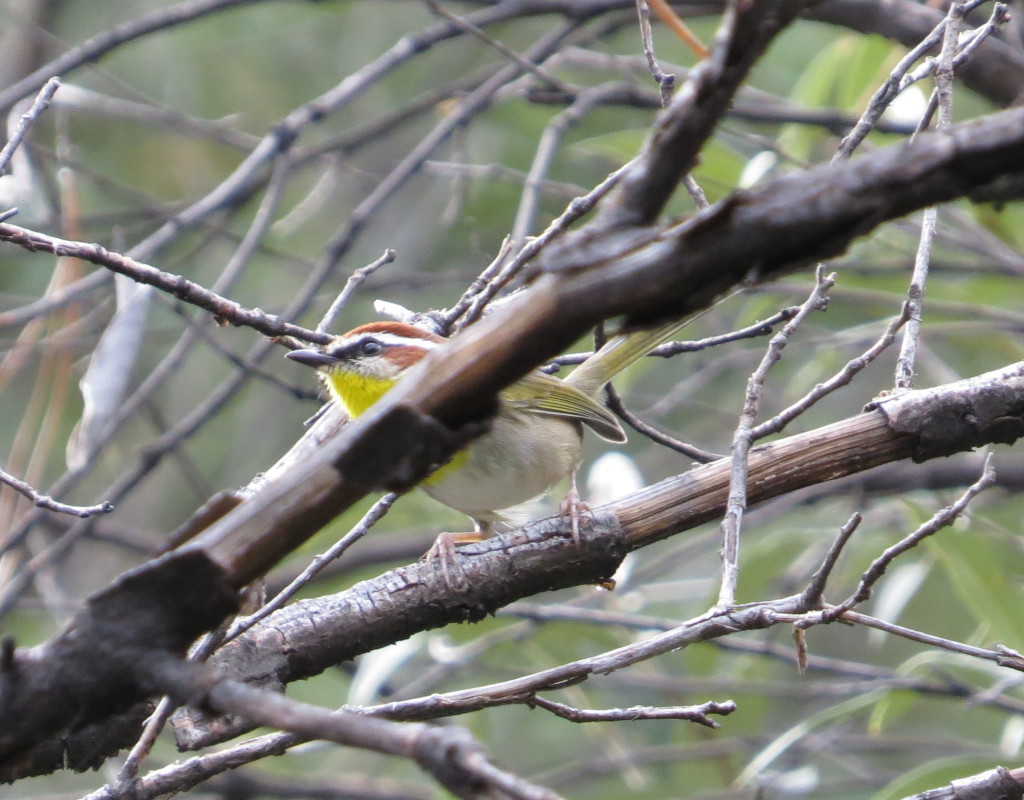 The Rufous-capped Warbler beat out the Pygmy Owl and the Oriole that day in Hunter Canyon. This rare Mexican visitor was the main target of AZ trip #2. I can’t believe I saw one. I can’t believe I got a photo.
The Rufous-capped Warbler beat out the Pygmy Owl and the Oriole that day in Hunter Canyon. This rare Mexican visitor was the main target of AZ trip #2. I can’t believe I saw one. I can’t believe I got a photo.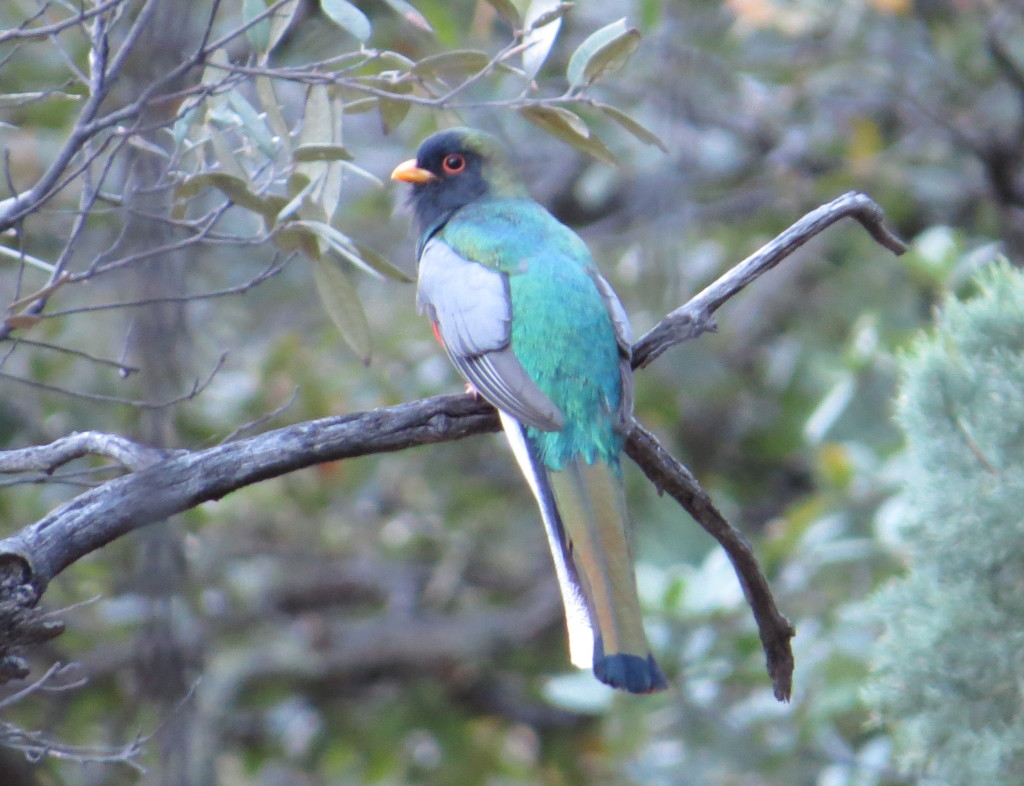 Can you believe a year in which Elegant Trogon doesn’t get the top slot? I mean, seriously? This was the main target for AZ trip #1. We were successful on the last morning. Tommy led us to victory that day. What a thrill it was to chase this bird up the mountainside in Madera Canyon. The Elegant Trogon Fantastic Four made for an epic team. A huge thanks goes out to these two guys for being responsible for most of the birds seen in this list, but this one especially. Any other year guys and it would have been tops!
Can you believe a year in which Elegant Trogon doesn’t get the top slot? I mean, seriously? This was the main target for AZ trip #1. We were successful on the last morning. Tommy led us to victory that day. What a thrill it was to chase this bird up the mountainside in Madera Canyon. The Elegant Trogon Fantastic Four made for an epic team. A huge thanks goes out to these two guys for being responsible for most of the birds seen in this list, but this one especially. Any other year guys and it would have been tops!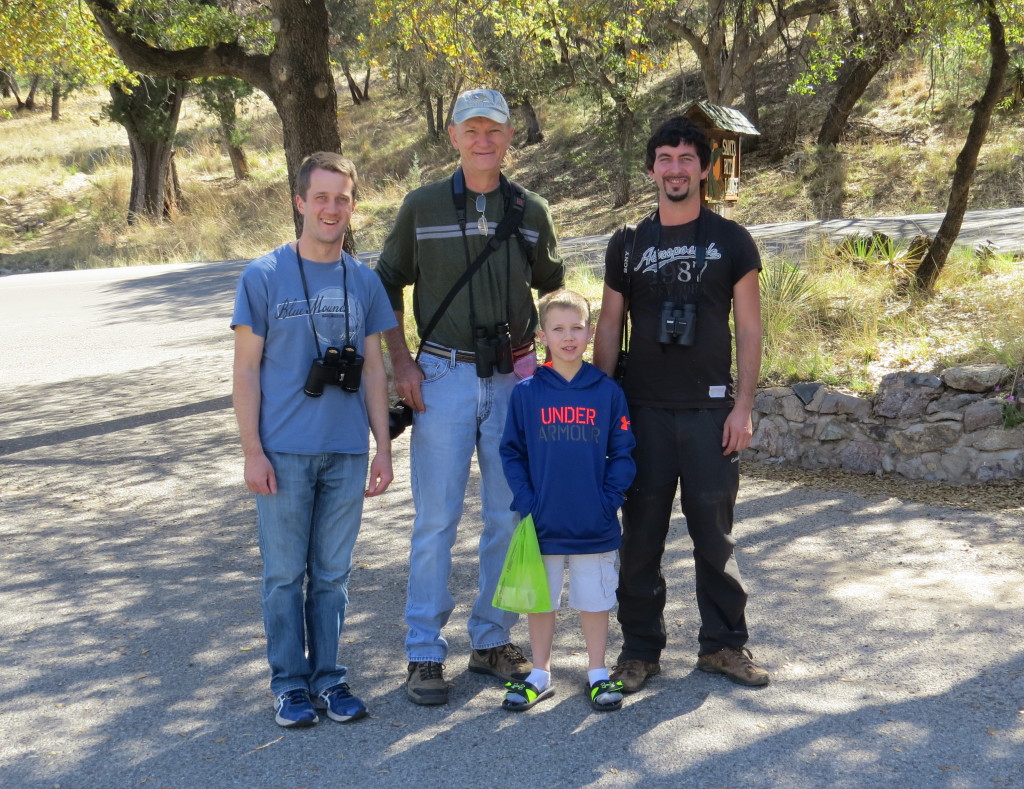 2. Gyrfalcon
2. Gyrfalcon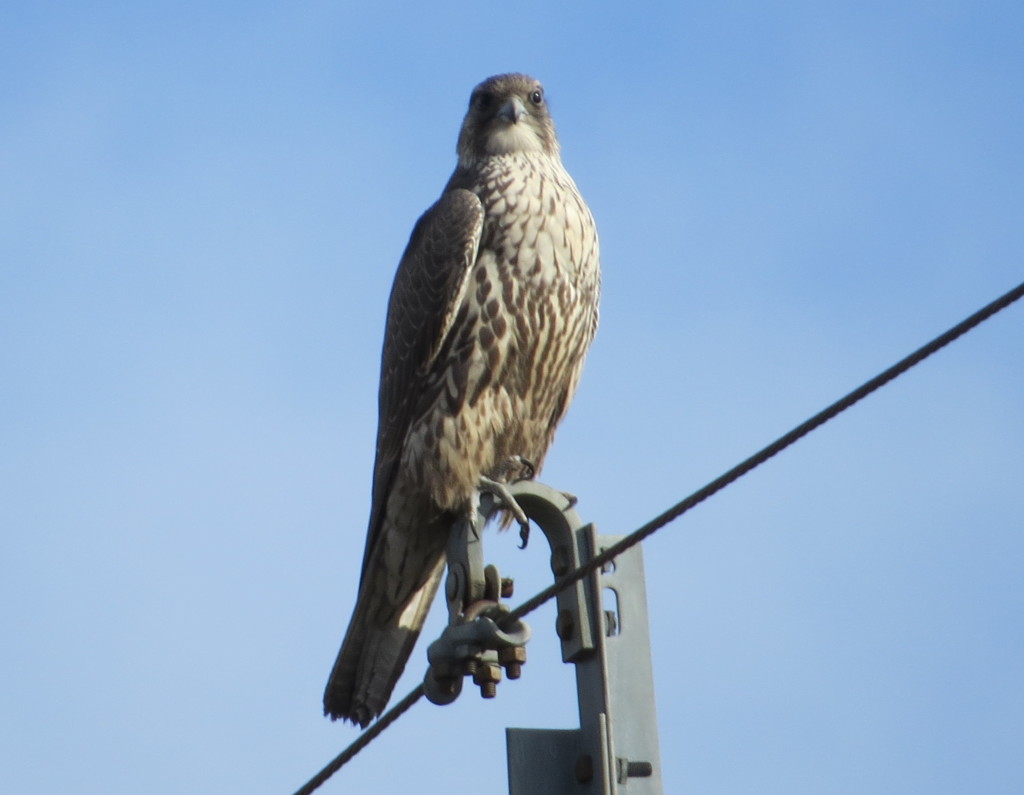 Now here’s one that I wasn’t expecting, as in at all, as in ever. 2015 was the year of the Gyrfalcon. I picked up my lifer in Superior, WI early in the year, but what catapulted this bird near the top of this list was when I accidentally stumbled on the bird pictured above right here in Kandiyohi County, giving me my state and county bird in one sweet shot with a good photo op to boot. Considering one hadn’t been seen in Minnesota in nearly three years, I was just a little excited when Bob Dunlap and a host of birding experts told me my misidentified Peregrine was actually a Gyr.
Now here’s one that I wasn’t expecting, as in at all, as in ever. 2015 was the year of the Gyrfalcon. I picked up my lifer in Superior, WI early in the year, but what catapulted this bird near the top of this list was when I accidentally stumbled on the bird pictured above right here in Kandiyohi County, giving me my state and county bird in one sweet shot with a good photo op to boot. Considering one hadn’t been seen in Minnesota in nearly three years, I was just a little excited when Bob Dunlap and a host of birding experts told me my misidentified Peregrine was actually a Gyr.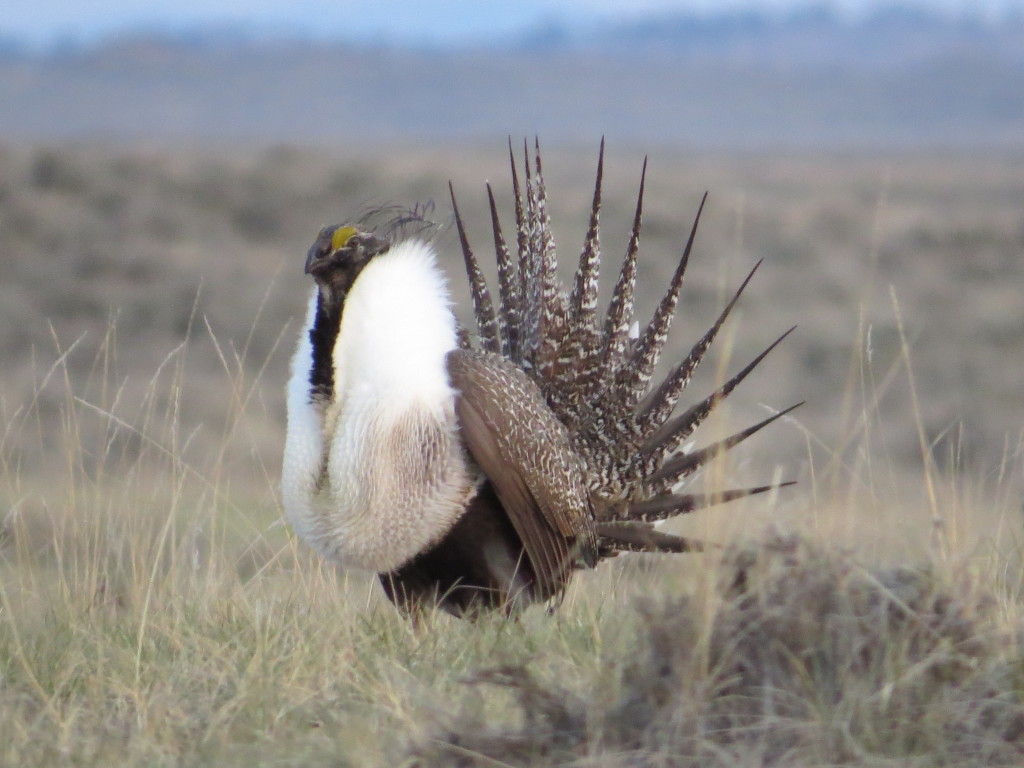 This bird had the top spot locked down before 2015 even began. This was a very special bird that Evan and I made a special trip to Montana to see. We got this lifer in the company of my dad who researched this bird extensively in the 1970s for the Montana Fish&Game Department (presently called the Montana Department of Fish, Wildlife, and Parks). We didn’t just see this bird. From a blind we got to observe the males doing their elaborate courtship displays on the lek. There was no better way to add this bird to the life list. The Greater Sage-Grouse was hands-down the best bird of 2015. A special thanks goes out to John Carlson for setting up the adventure, Charlie Eustace for joining us, Leo and Jo Jurica for hosting us, and to my dad for humoring my idea. It was a pleasure to meet John and Charlie and go on a very memorable outing together.
This bird had the top spot locked down before 2015 even began. This was a very special bird that Evan and I made a special trip to Montana to see. We got this lifer in the company of my dad who researched this bird extensively in the 1970s for the Montana Fish&Game Department (presently called the Montana Department of Fish, Wildlife, and Parks). We didn’t just see this bird. From a blind we got to observe the males doing their elaborate courtship displays on the lek. There was no better way to add this bird to the life list. The Greater Sage-Grouse was hands-down the best bird of 2015. A special thanks goes out to John Carlson for setting up the adventure, Charlie Eustace for joining us, Leo and Jo Jurica for hosting us, and to my dad for humoring my idea. It was a pleasure to meet John and Charlie and go on a very memorable outing together.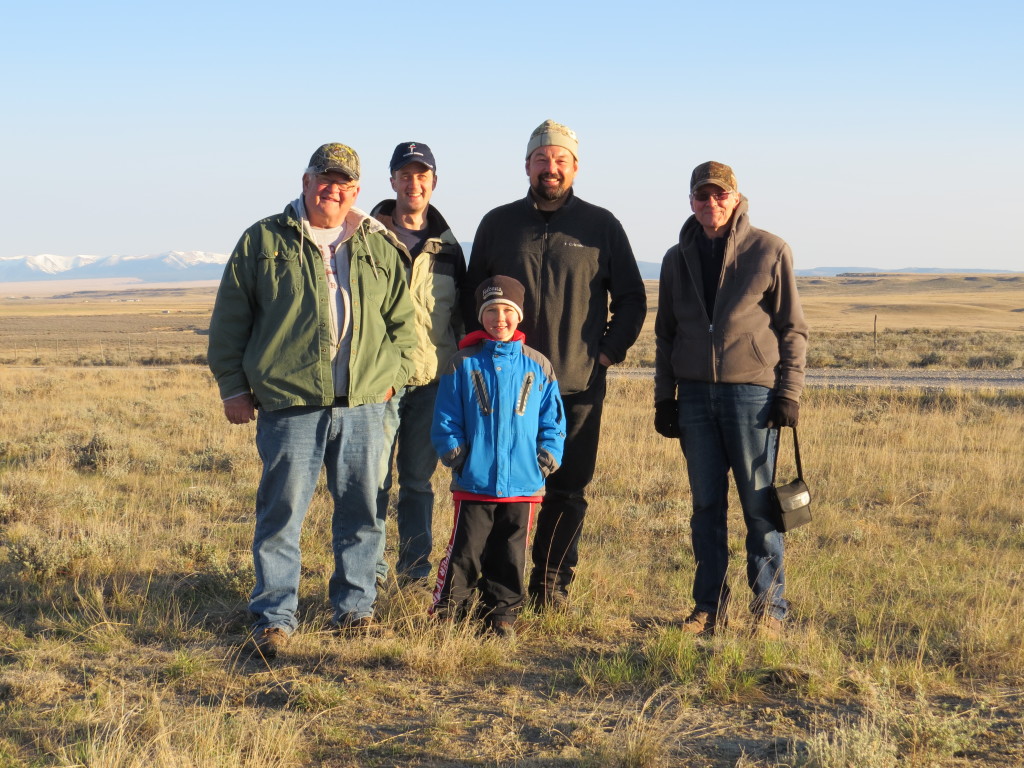
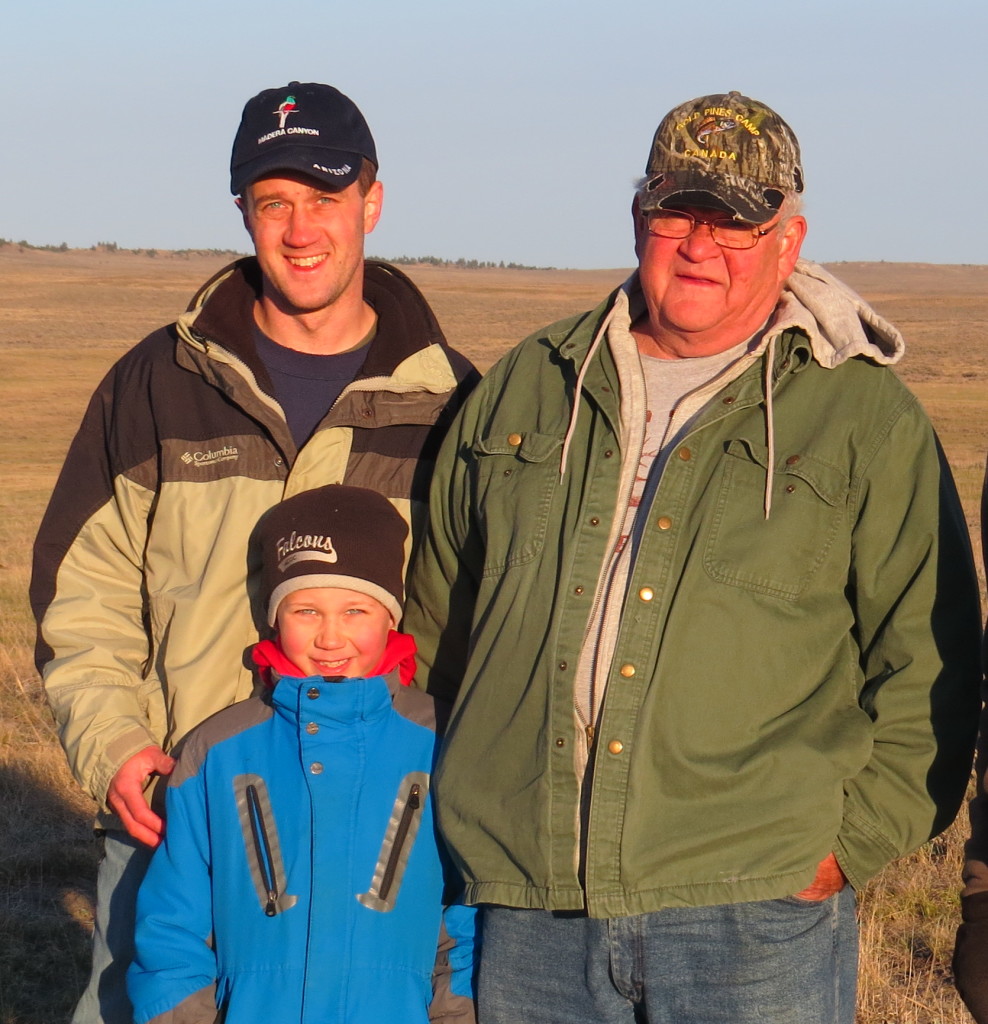
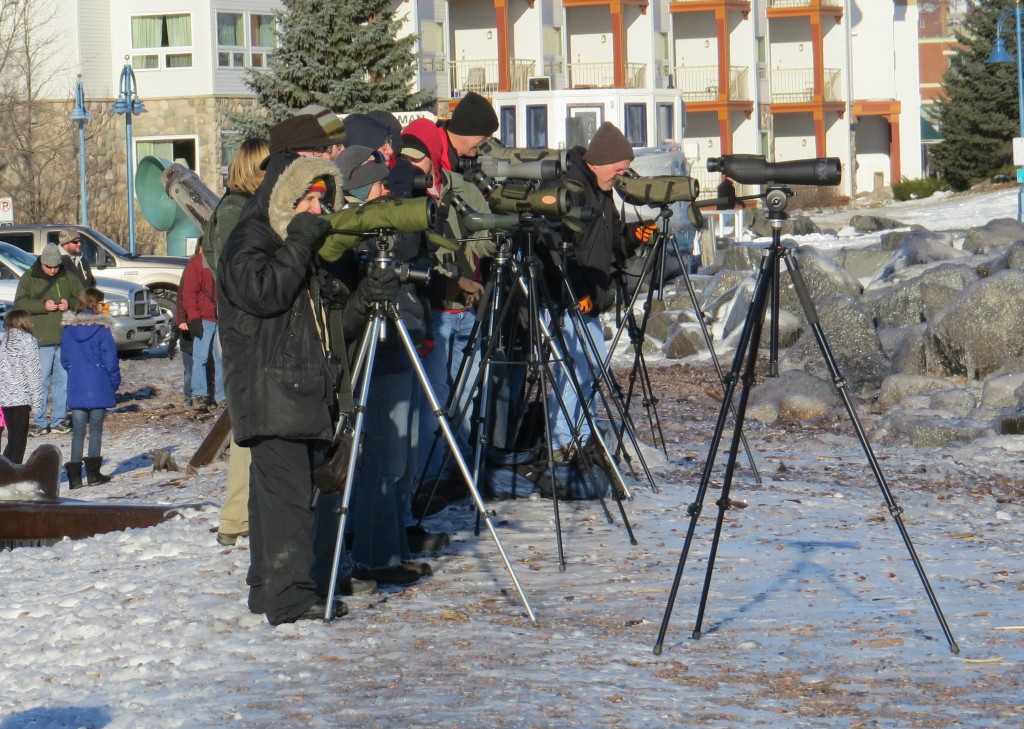 Willmar, of course, sent its own small delegation of eager birders to the Great Birder Assembly. Joining me in the pursuit of a shared, epic lifer were Randy Frederickson and Joel Schmidt. The gathering also gave my yearly and life birder lists a boost.
Willmar, of course, sent its own small delegation of eager birders to the Great Birder Assembly. Joining me in the pursuit of a shared, epic lifer were Randy Frederickson and Joel Schmidt. The gathering also gave my yearly and life birder lists a boost. Here’s what all the fuss is about:
Here’s what all the fuss is about: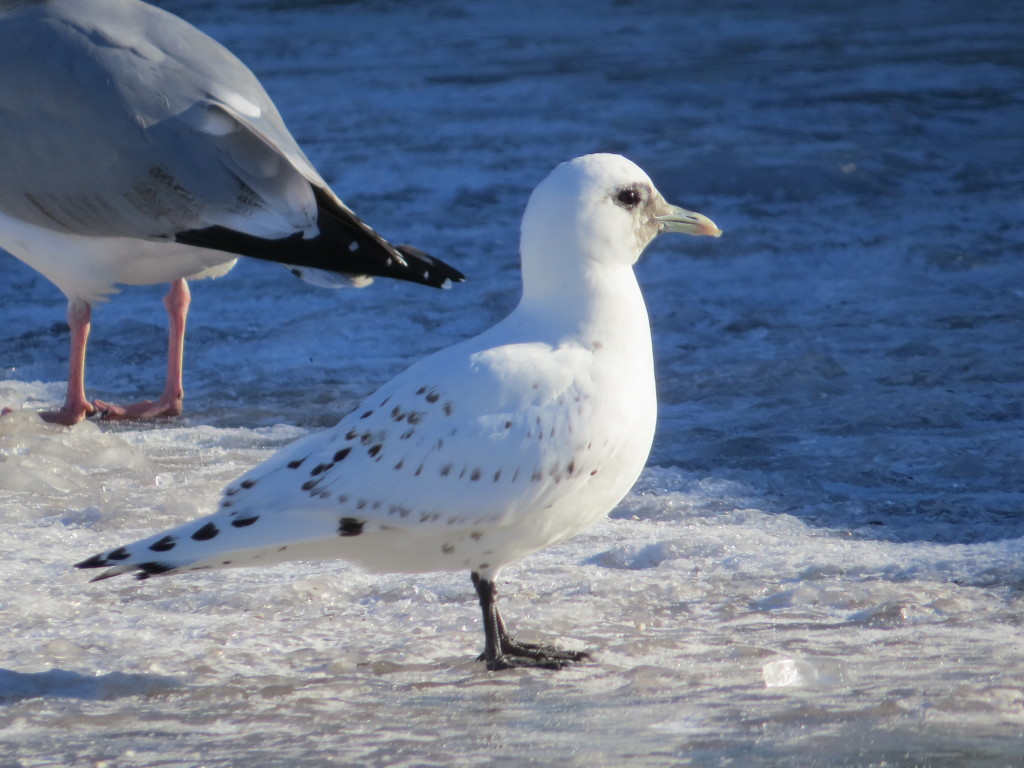
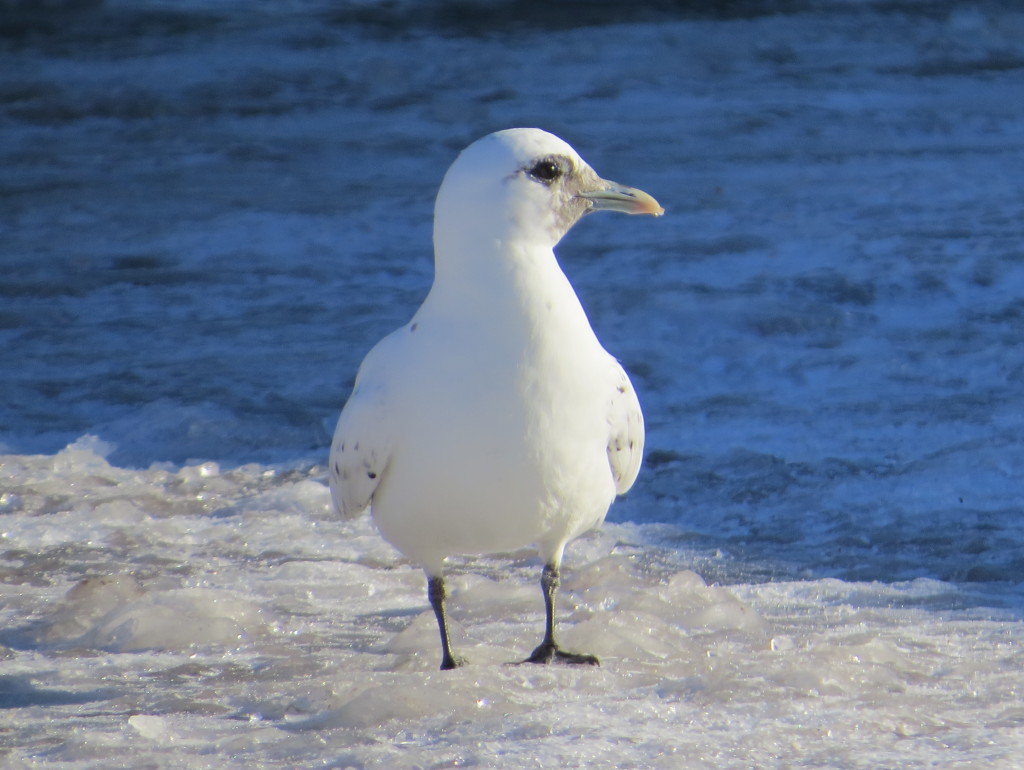
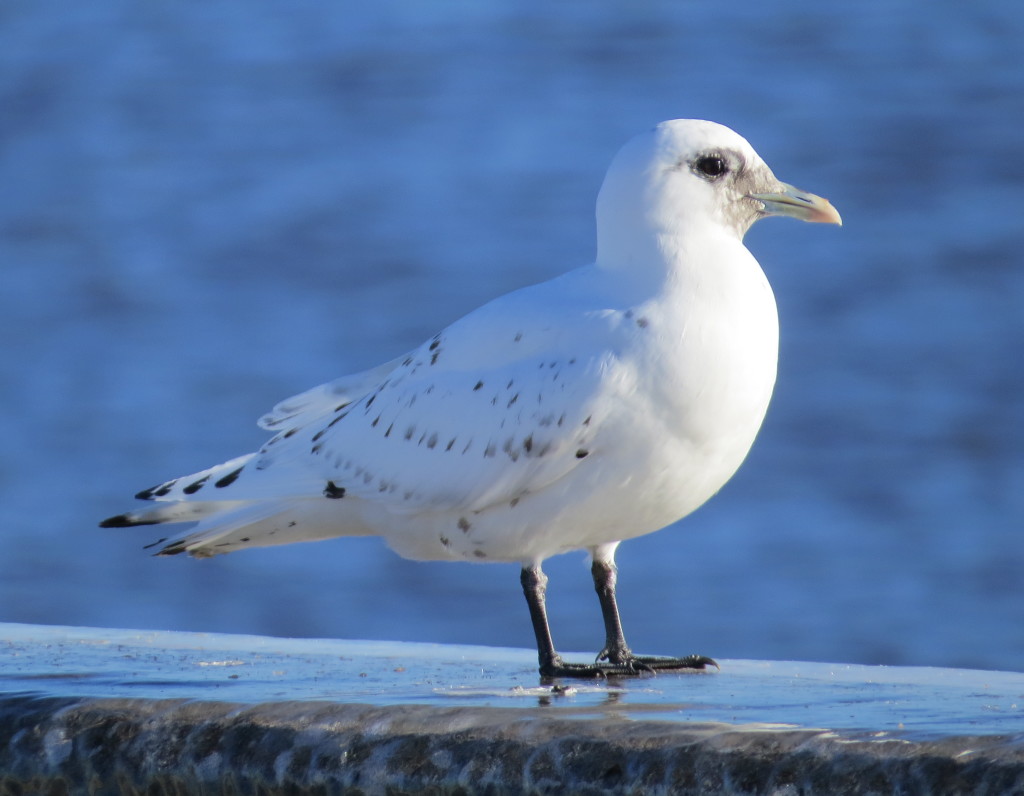
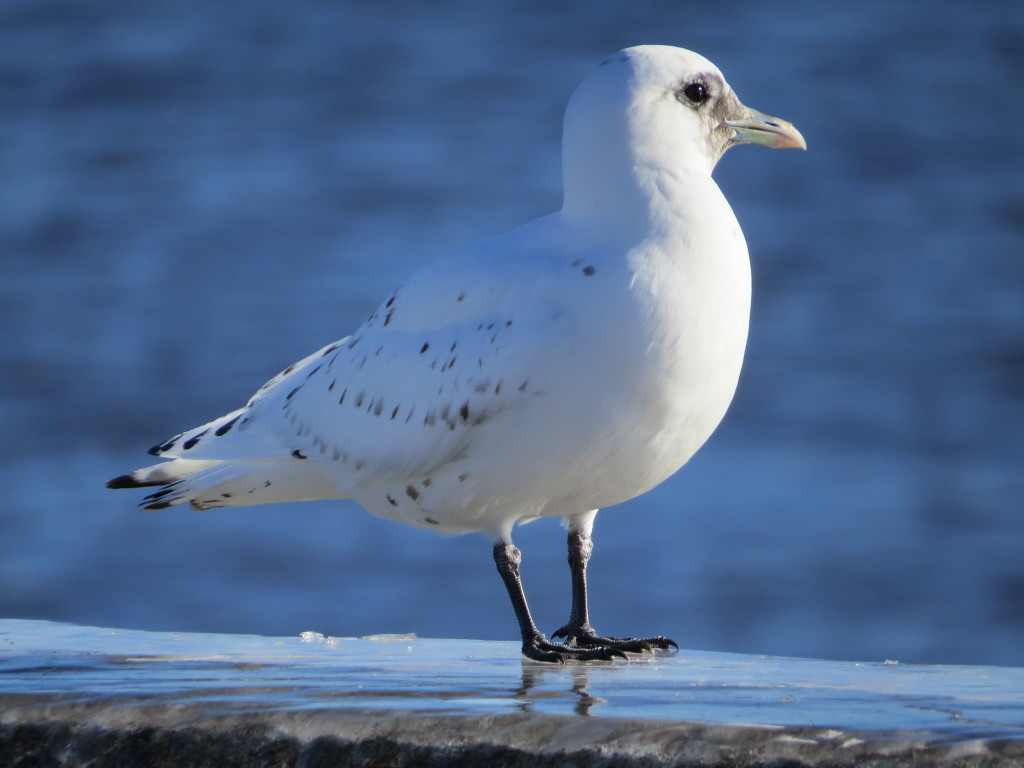 Conditions for viewing the IVGU were awful: wave action from Lake Superior had created a thick glaze of ice over every place an observer might stand. Never have I feared a concussion or wished I owned cleats more. It was downright dangerous. Even the Ivory walked with trepidation.
Conditions for viewing the IVGU were awful: wave action from Lake Superior had created a thick glaze of ice over every place an observer might stand. Never have I feared a concussion or wished I owned cleats more. It was downright dangerous. Even the Ivory walked with trepidation.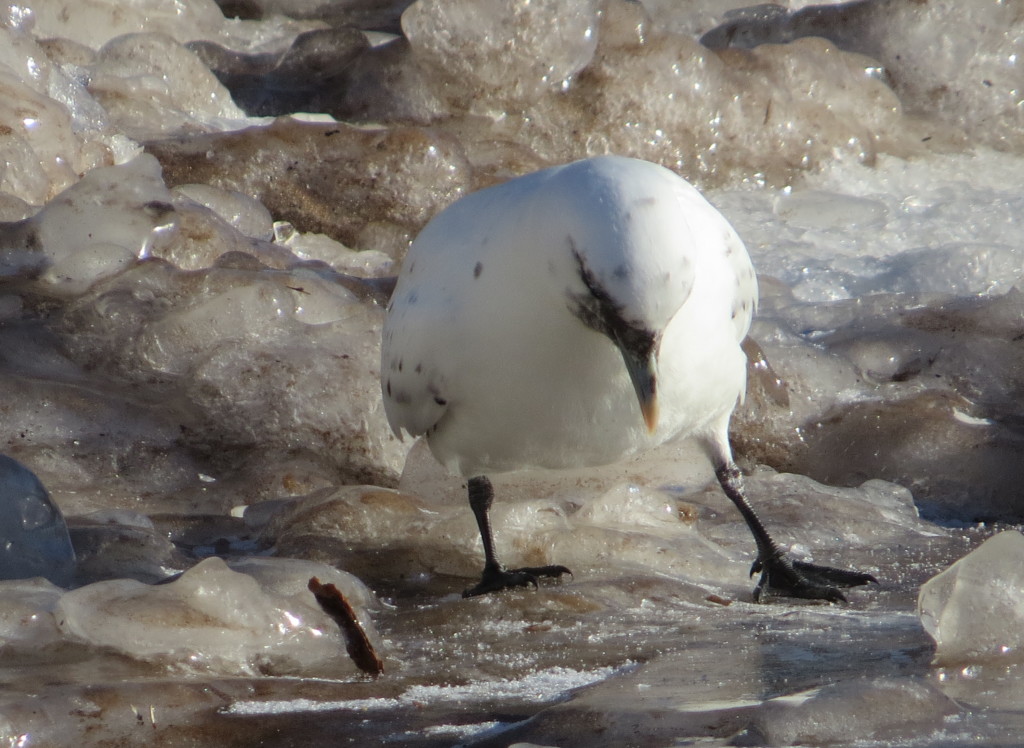 At one point a birder next to me didn’t really know how to proceed off the icy knoll on which we stood. I was getting annoyed with his prolonged hesitation. Then I felt like a complete jerk when the older fellow asked me if I would take his arm and help him down. As I gripped his quivering arm, I realized that this could be me in 30 or so years. It was a reminder of how quickly life moves and why events like this are so important, why we need to experience the phenomenal while we can. Going with friends, like Randy and Joel, make it even better, especially when celebratory beers are had at a place like Bent Paddle Brewhouse.
At one point a birder next to me didn’t really know how to proceed off the icy knoll on which we stood. I was getting annoyed with his prolonged hesitation. Then I felt like a complete jerk when the older fellow asked me if I would take his arm and help him down. As I gripped his quivering arm, I realized that this could be me in 30 or so years. It was a reminder of how quickly life moves and why events like this are so important, why we need to experience the phenomenal while we can. Going with friends, like Randy and Joel, make it even better, especially when celebratory beers are had at a place like Bent Paddle Brewhouse.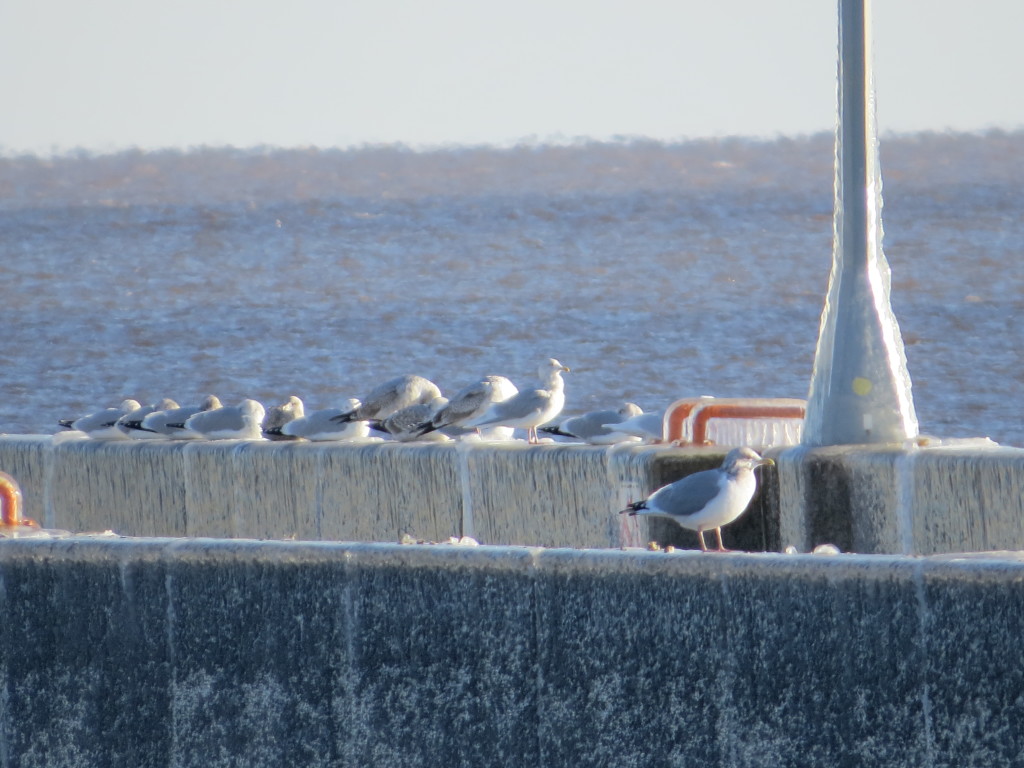 Here was an immature bird that is Thayer’s/Iceland intergrade. The local Larus Jedi call him Stumpy because of his missing tail.
Here was an immature bird that is Thayer’s/Iceland intergrade. The local Larus Jedi call him Stumpy because of his missing tail.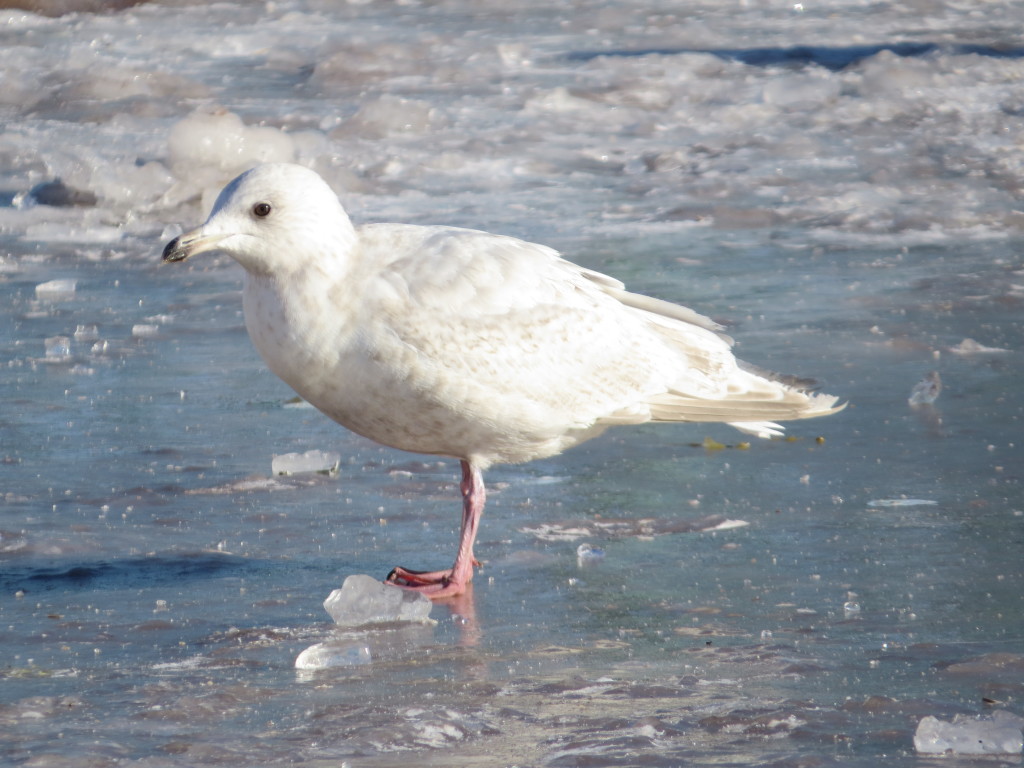 We did see a couple of adult Thayer’s but no Glaucous Gulls this time. Since I got the full Gull smorgasbord a month ago, besides the Ivory I was most excited about all the American Black Ducks. I counted well over a dozen among the 300 Mallards. They really do stand out and the proximity and sunlight made them especially photogenic on this gorgeous day. This is a duck I just don’t see enough, so this was quite enjoyable.
We did see a couple of adult Thayer’s but no Glaucous Gulls this time. Since I got the full Gull smorgasbord a month ago, besides the Ivory I was most excited about all the American Black Ducks. I counted well over a dozen among the 300 Mallards. They really do stand out and the proximity and sunlight made them especially photogenic on this gorgeous day. This is a duck I just don’t see enough, so this was quite enjoyable.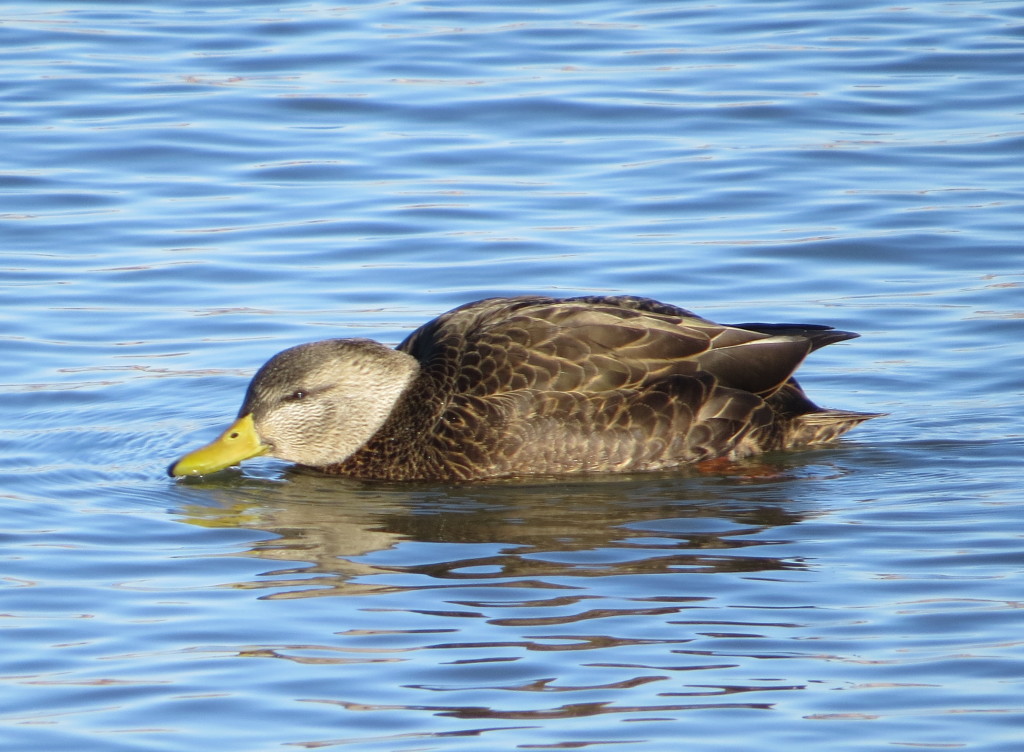
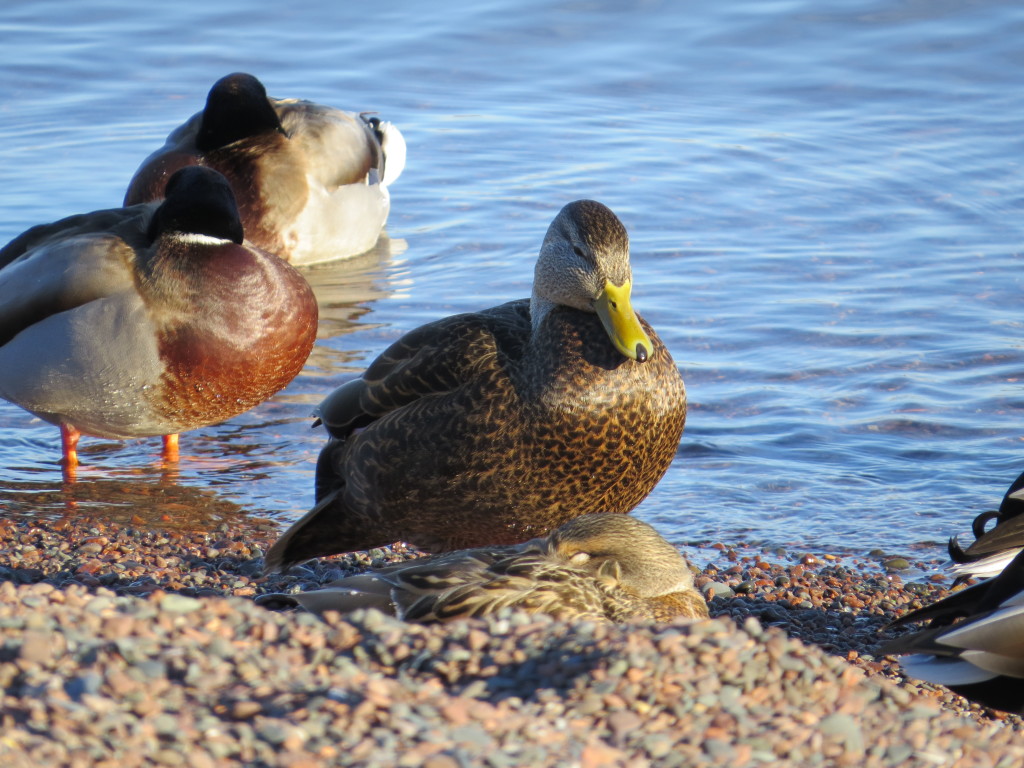
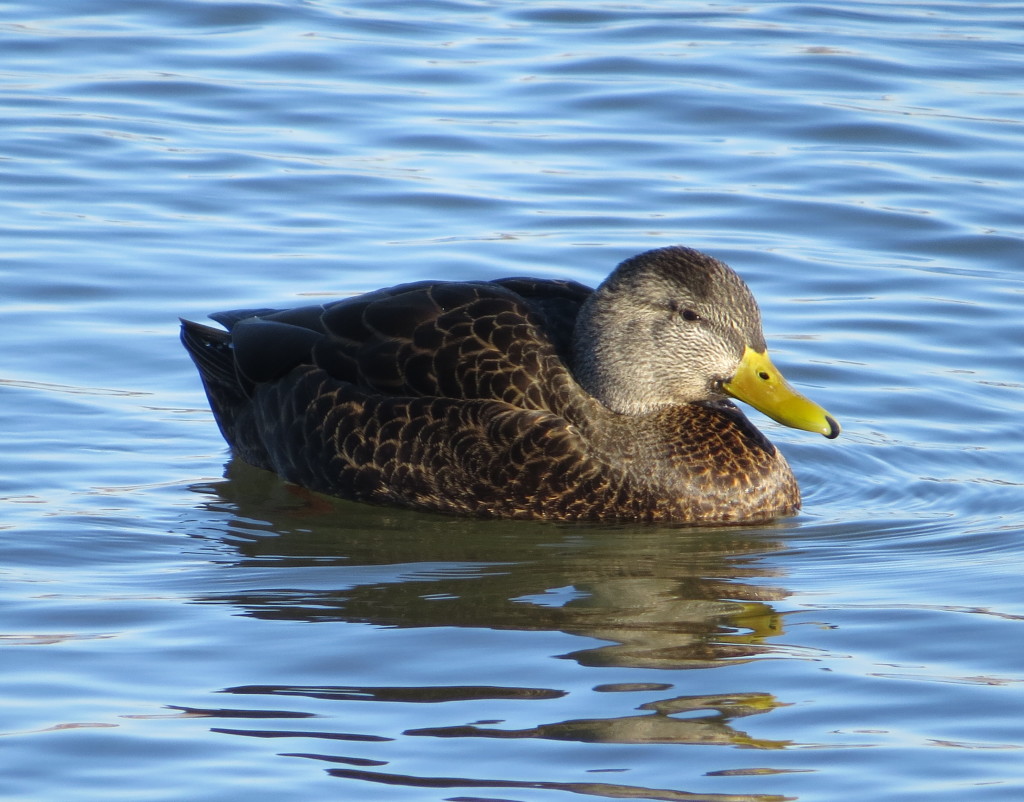 We lingered around Canal Park for a couple hours hoping to find Joel a Great Black-backed Gull lifer, but it just wasn’t in the cards. What was in the cards was the arrival of the longest ship known to the Great Lakes, the 1014-foot long Paul R. Tregurtha:
We lingered around Canal Park for a couple hours hoping to find Joel a Great Black-backed Gull lifer, but it just wasn’t in the cards. What was in the cards was the arrival of the longest ship known to the Great Lakes, the 1014-foot long Paul R. Tregurtha: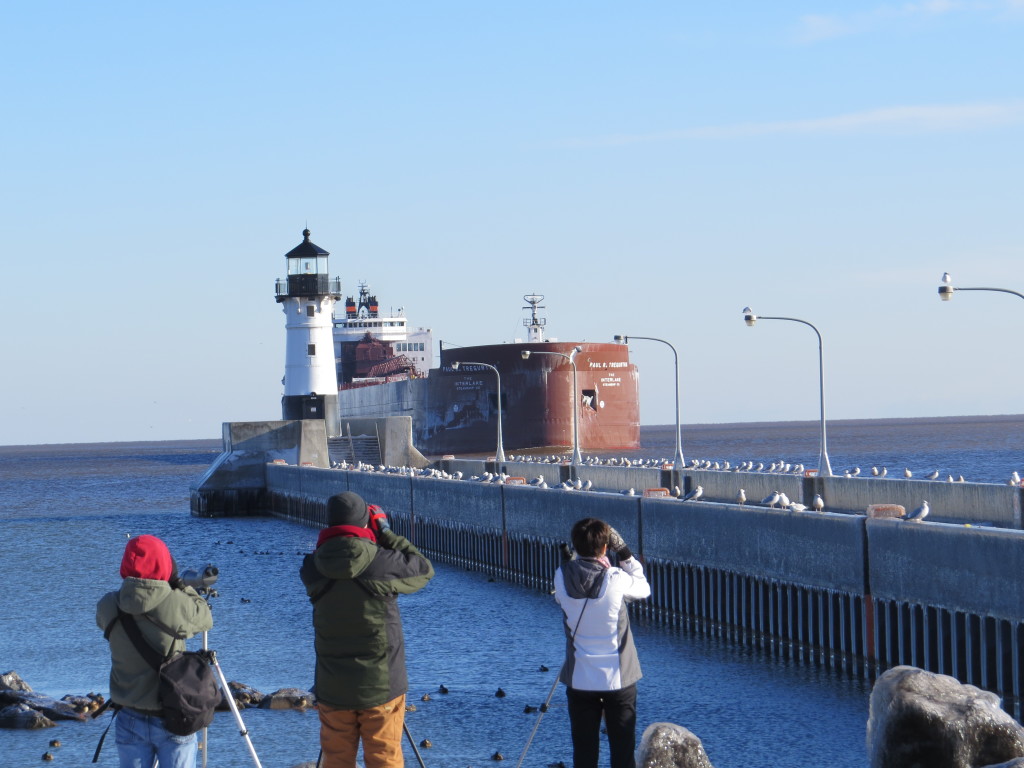


 An accidental rare species from the Arctic and the largest ship on the Great Lakes coming in to port made for a most exciting outing. We had one more errand that would put this day completely up and over the top–crossing the Blatnik Bridge to Superior, Wisconsin to pick up a 2016 Gyrfalcon! In less than a year’s time I have seen three Gyrfalcons, which still is not enough because like Jello, there’s always room for Gyr. Photos at this distance were practically impossible, but I’m okay with
An accidental rare species from the Arctic and the largest ship on the Great Lakes coming in to port made for a most exciting outing. We had one more errand that would put this day completely up and over the top–crossing the Blatnik Bridge to Superior, Wisconsin to pick up a 2016 Gyrfalcon! In less than a year’s time I have seen three Gyrfalcons, which still is not enough because like Jello, there’s always room for Gyr. Photos at this distance were practically impossible, but I’m okay with 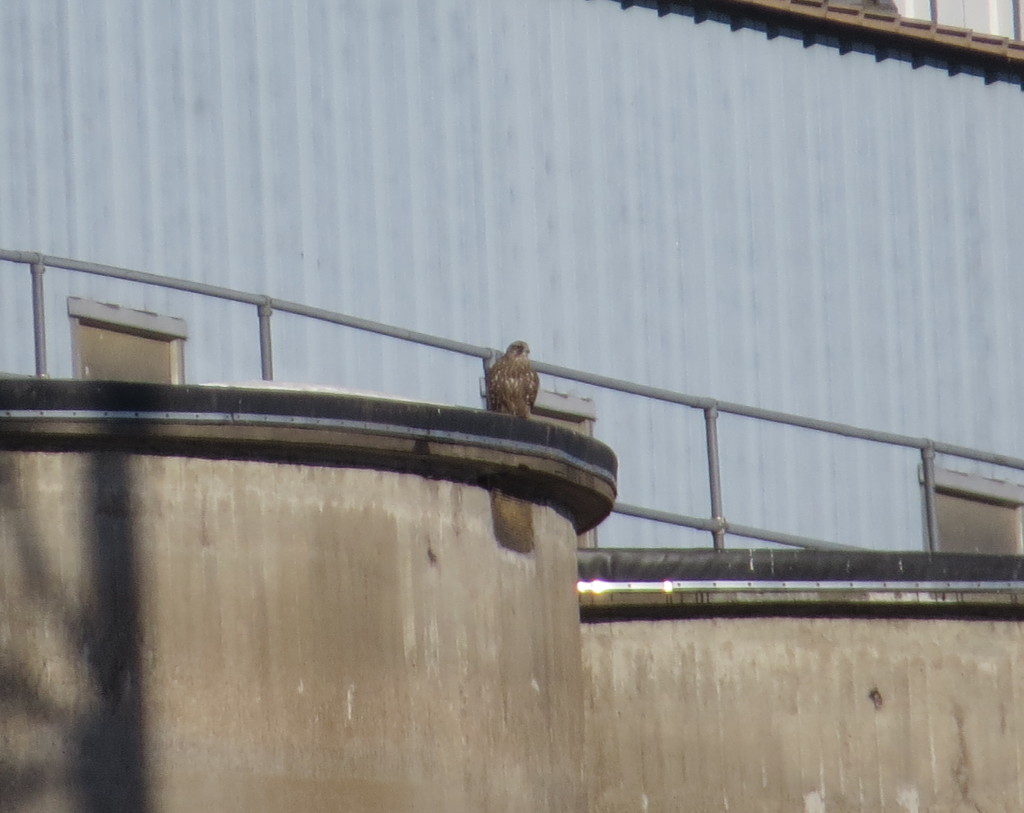
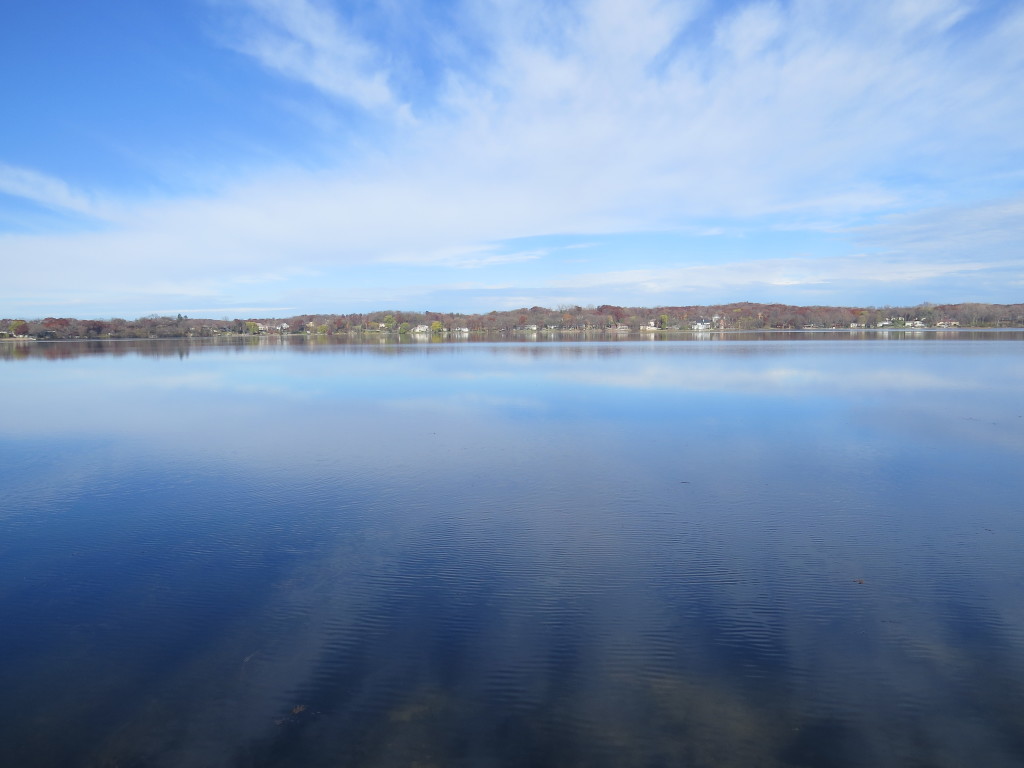 I drove along the west shore of the lake and pulled into a boat launch to scan the waters. Right away I saw a binocular-clad gentleman loading a spotting scope into a shiny Prius–this birder could be spotted a mile away. I asked him if he saw the duck. He told me no and said he’d missed on it multiple times. Odd, I thought, as I recalled the duck being reported every single day for the better part of a week. After this exchange, he and I both headed to Orchard Lake Park on the south end of the lake where people had said was the best place from which to see the Scoter. He had the lead as I followed his car into the parking lot. Rather than parking in a stall, he faced his vehicle directly at the water. I parked, looked at the water and instantly saw a distant, giant, black-and-white blob that had Surf Scoter GISS written all over it. Before I could get my binoculars up to verify, the other birder, who never left his car, turned around after 30 seconds and drove out of the park! My desire to look at my Surf Scoter lifer was suddenly replaced by the fear that this guy might have, somehow, missed it. Was it diving when he looked? Did he not recognize this juvenile form of this species? Did he see it, get his tic, and just peel out? Even if the guy was just a lister, who doesn’t spend at least a couple minutes enjoying looking at an ocean-going Scoter in MINNESOTA? I panicked. I hesitated. Do I race after him on foot and pound on his trunk? Do I hop in my car and chase him down? You can’t save them all, I guess. Oh, well. Let’s have a look at that Surf Scoter…
I drove along the west shore of the lake and pulled into a boat launch to scan the waters. Right away I saw a binocular-clad gentleman loading a spotting scope into a shiny Prius–this birder could be spotted a mile away. I asked him if he saw the duck. He told me no and said he’d missed on it multiple times. Odd, I thought, as I recalled the duck being reported every single day for the better part of a week. After this exchange, he and I both headed to Orchard Lake Park on the south end of the lake where people had said was the best place from which to see the Scoter. He had the lead as I followed his car into the parking lot. Rather than parking in a stall, he faced his vehicle directly at the water. I parked, looked at the water and instantly saw a distant, giant, black-and-white blob that had Surf Scoter GISS written all over it. Before I could get my binoculars up to verify, the other birder, who never left his car, turned around after 30 seconds and drove out of the park! My desire to look at my Surf Scoter lifer was suddenly replaced by the fear that this guy might have, somehow, missed it. Was it diving when he looked? Did he not recognize this juvenile form of this species? Did he see it, get his tic, and just peel out? Even if the guy was just a lister, who doesn’t spend at least a couple minutes enjoying looking at an ocean-going Scoter in MINNESOTA? I panicked. I hesitated. Do I race after him on foot and pound on his trunk? Do I hop in my car and chase him down? You can’t save them all, I guess. Oh, well. Let’s have a look at that Surf Scoter…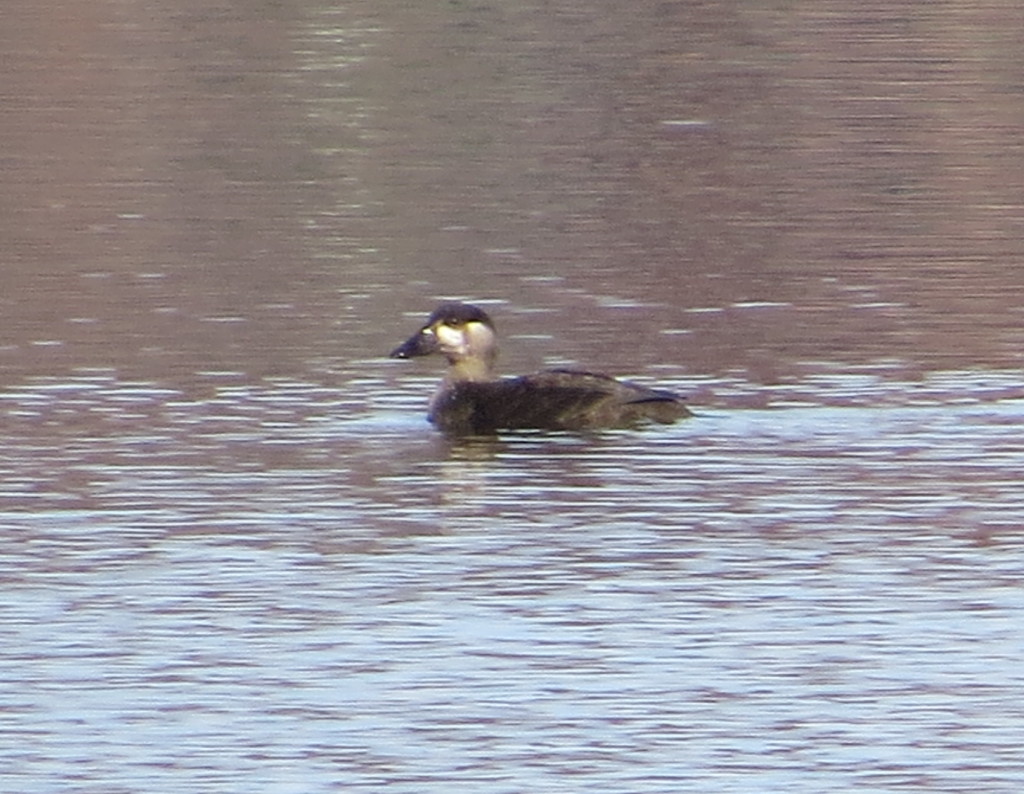 This is now my fifth species of sea duck in Minnesota with White-winged Scoter, Harlequin Duck, Common Eider, and Long-tailed Duck making up the others. I kind of prefer my sea ducks on the turbulent, cold waters of Lake Superior on a gray day. That kind of backdrop adds to the mystique and allure of sea ducks. Seeing one on a placid metro lake reflecting lingering fall colors on a 72° day is just kind of so-so.
This is now my fifth species of sea duck in Minnesota with White-winged Scoter, Harlequin Duck, Common Eider, and Long-tailed Duck making up the others. I kind of prefer my sea ducks on the turbulent, cold waters of Lake Superior on a gray day. That kind of backdrop adds to the mystique and allure of sea ducks. Seeing one on a placid metro lake reflecting lingering fall colors on a 72° day is just kind of so-so.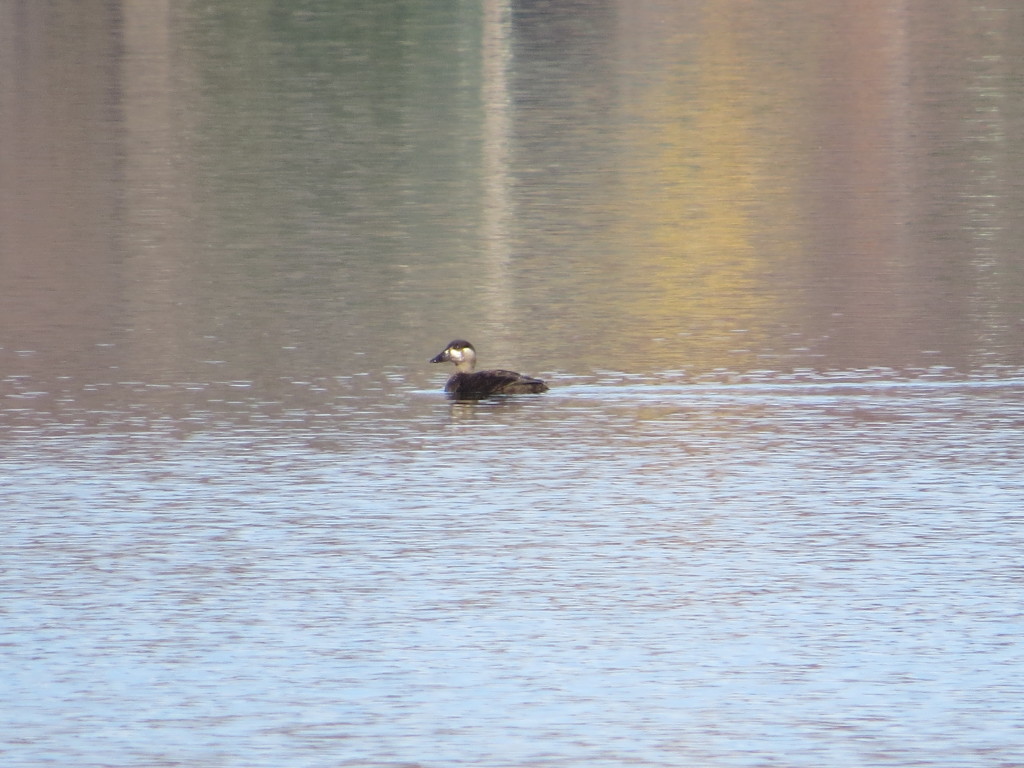 But even still. It’s cool. I mean, it’s a Scoter.
But even still. It’s cool. I mean, it’s a Scoter.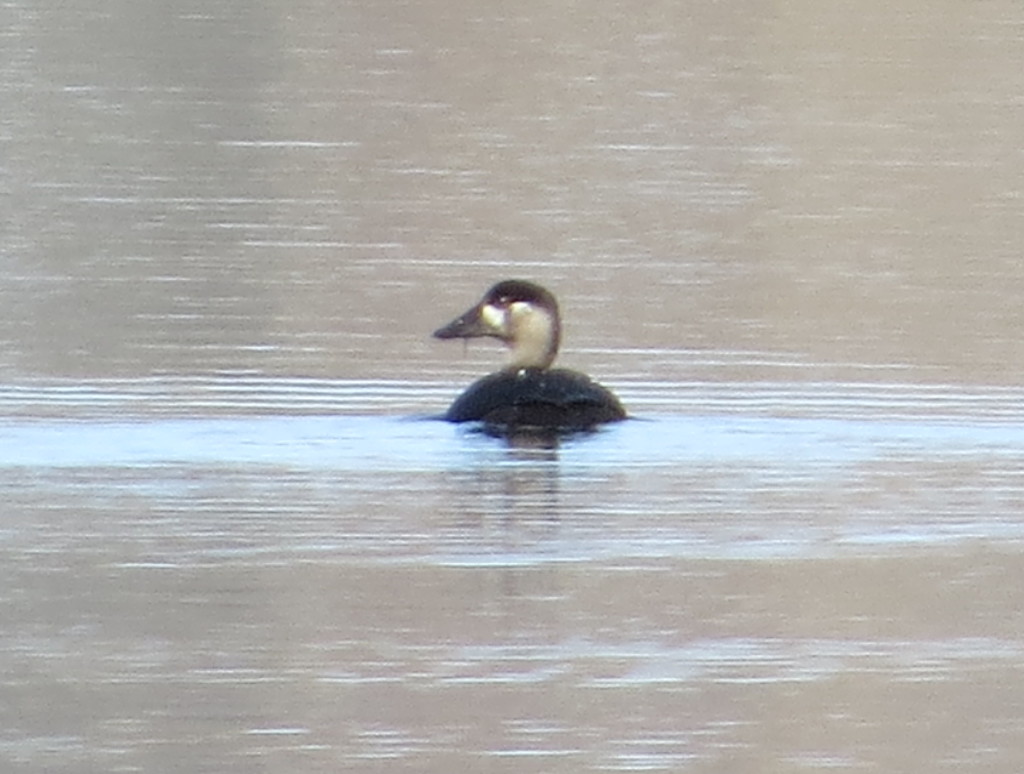
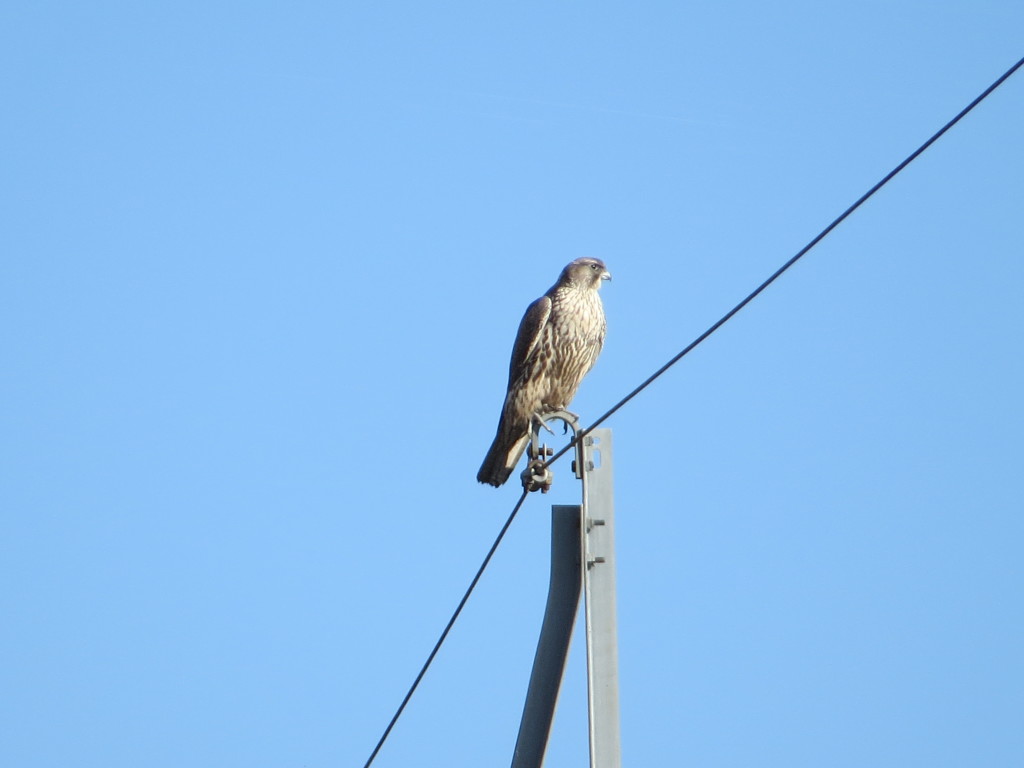
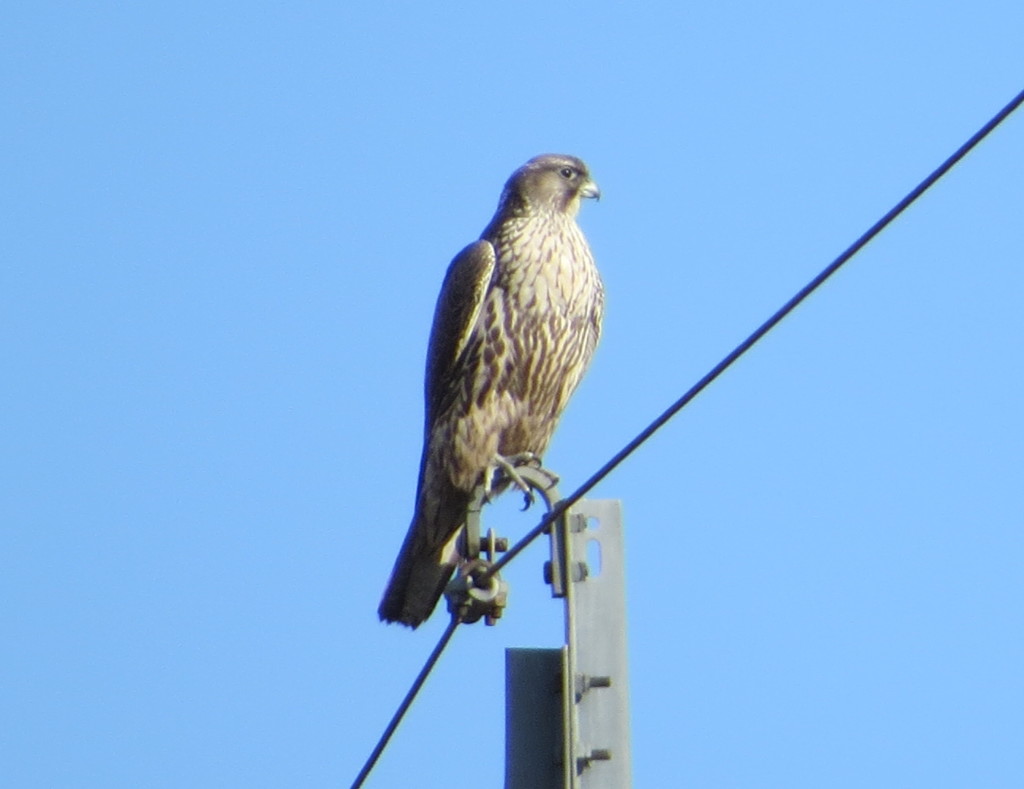
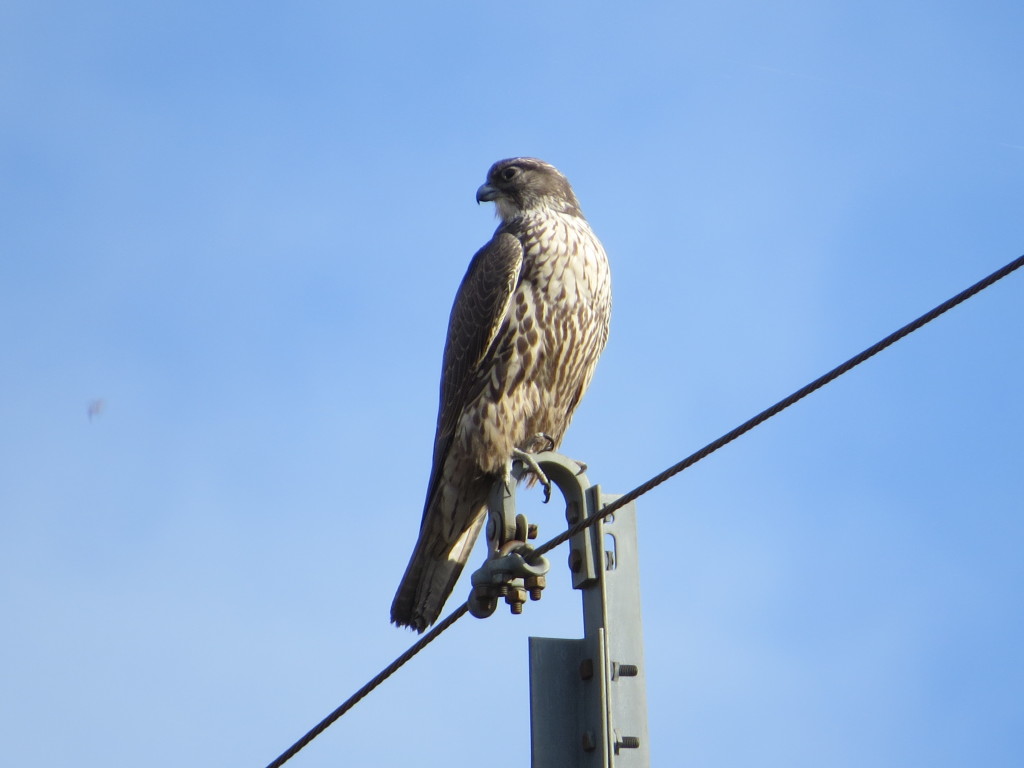
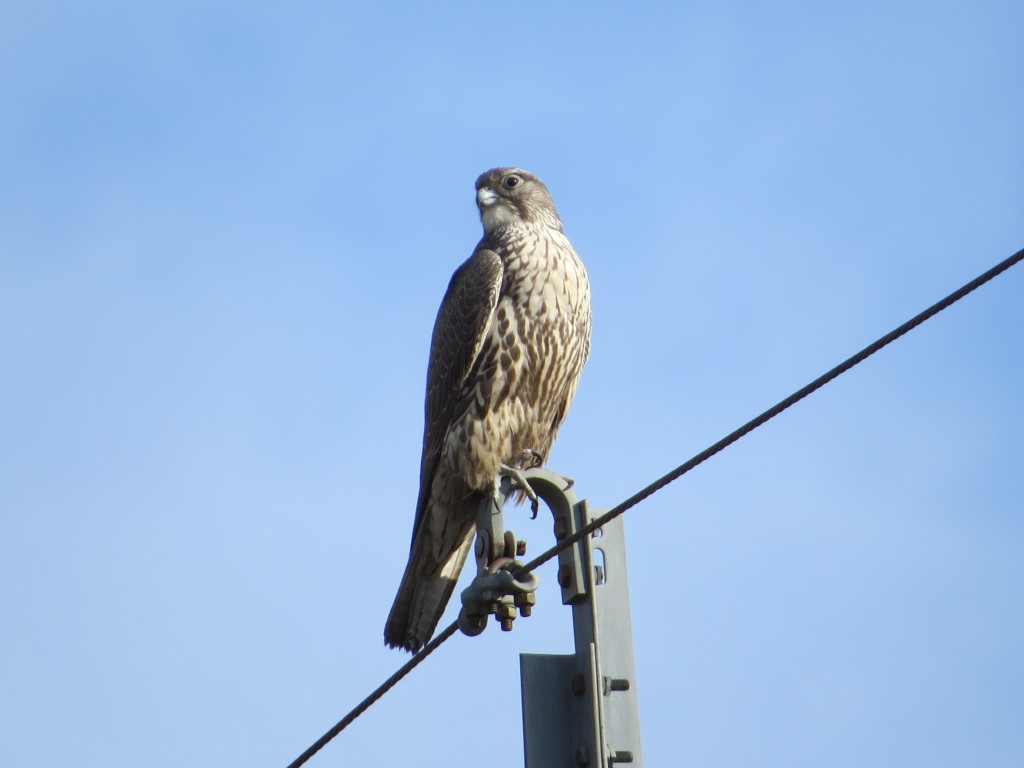

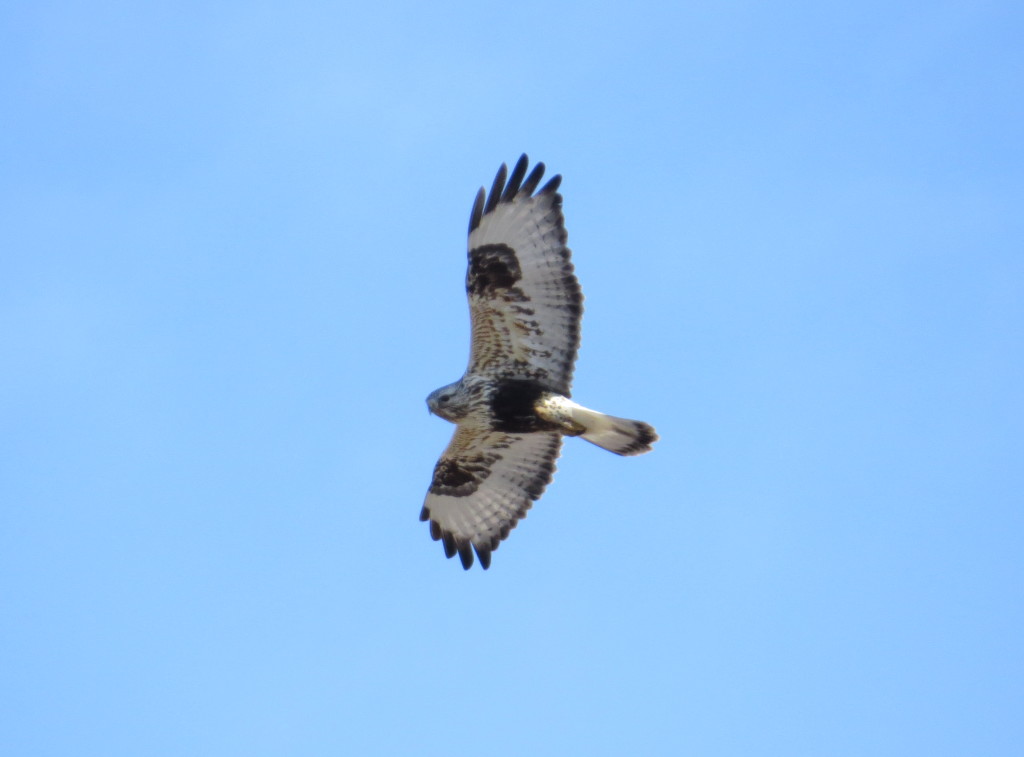


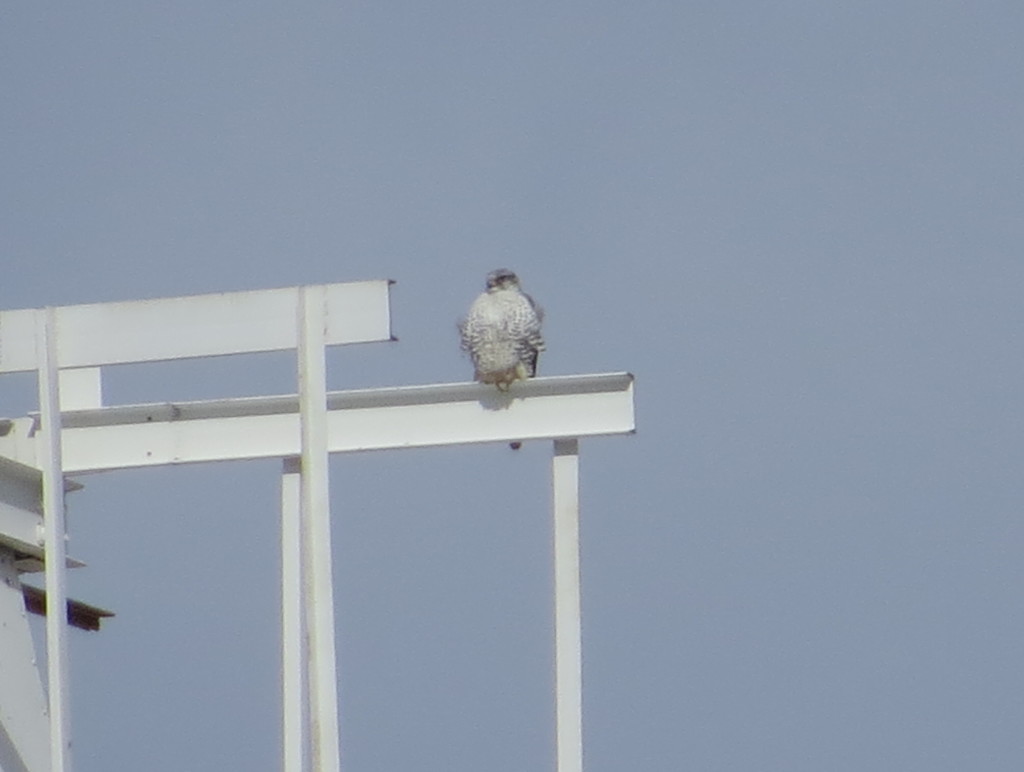
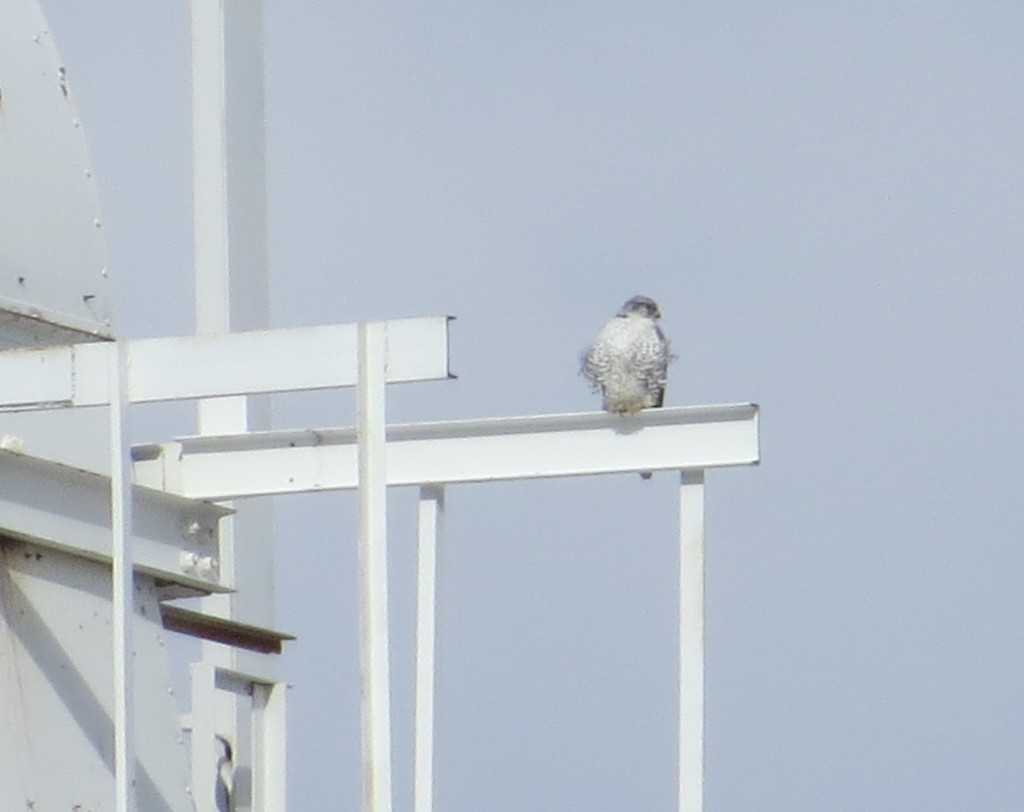 Some fun history on Gyr is that this same individual was caught and banded in 2003 in the Duluth/Superior area. At the time it was a third-year bird. It ended up returning every winter for four years and then did not return until this year! Given when it was banded, the age of this male Gyrfalcon is estimated to be 14 years 8 months–the oldest Gyrfalcon on record!
Some fun history on Gyr is that this same individual was caught and banded in 2003 in the Duluth/Superior area. At the time it was a third-year bird. It ended up returning every winter for four years and then did not return until this year! Given when it was banded, the age of this male Gyrfalcon is estimated to be 14 years 8 months–the oldest Gyrfalcon on record!